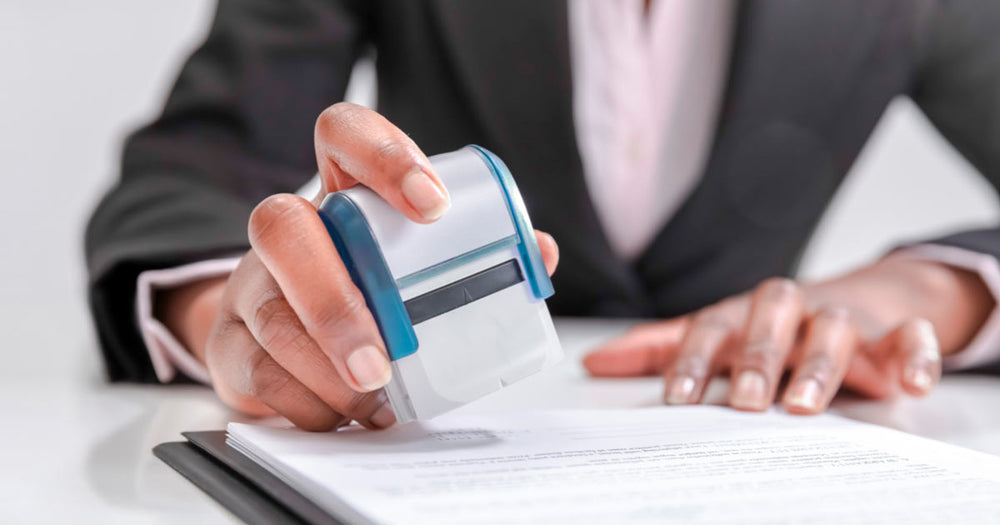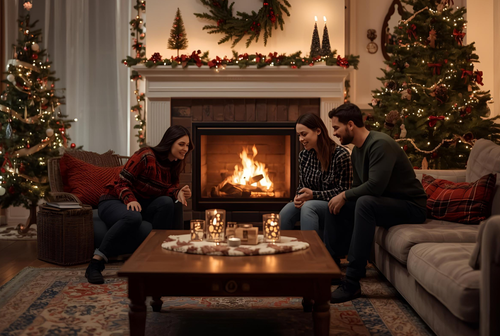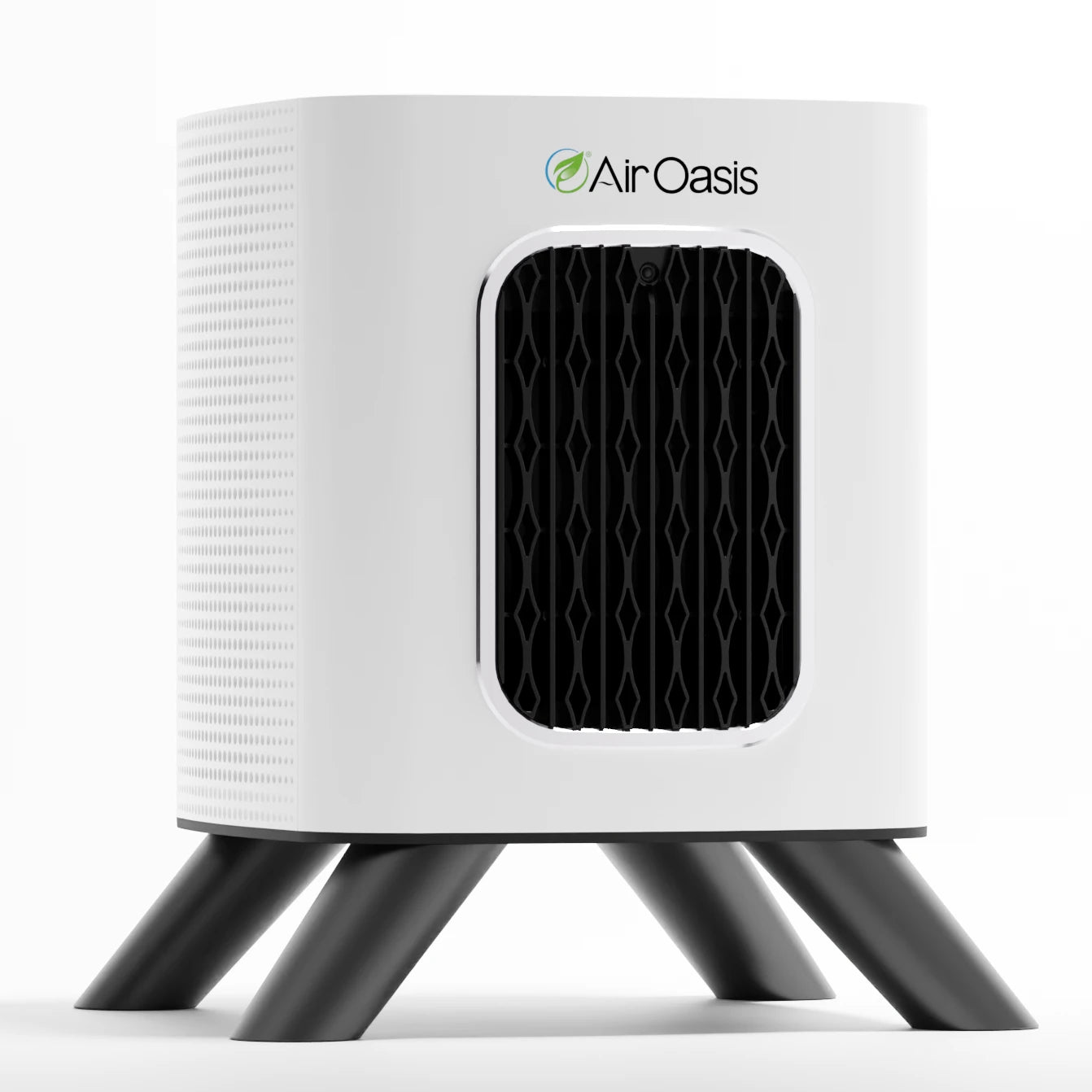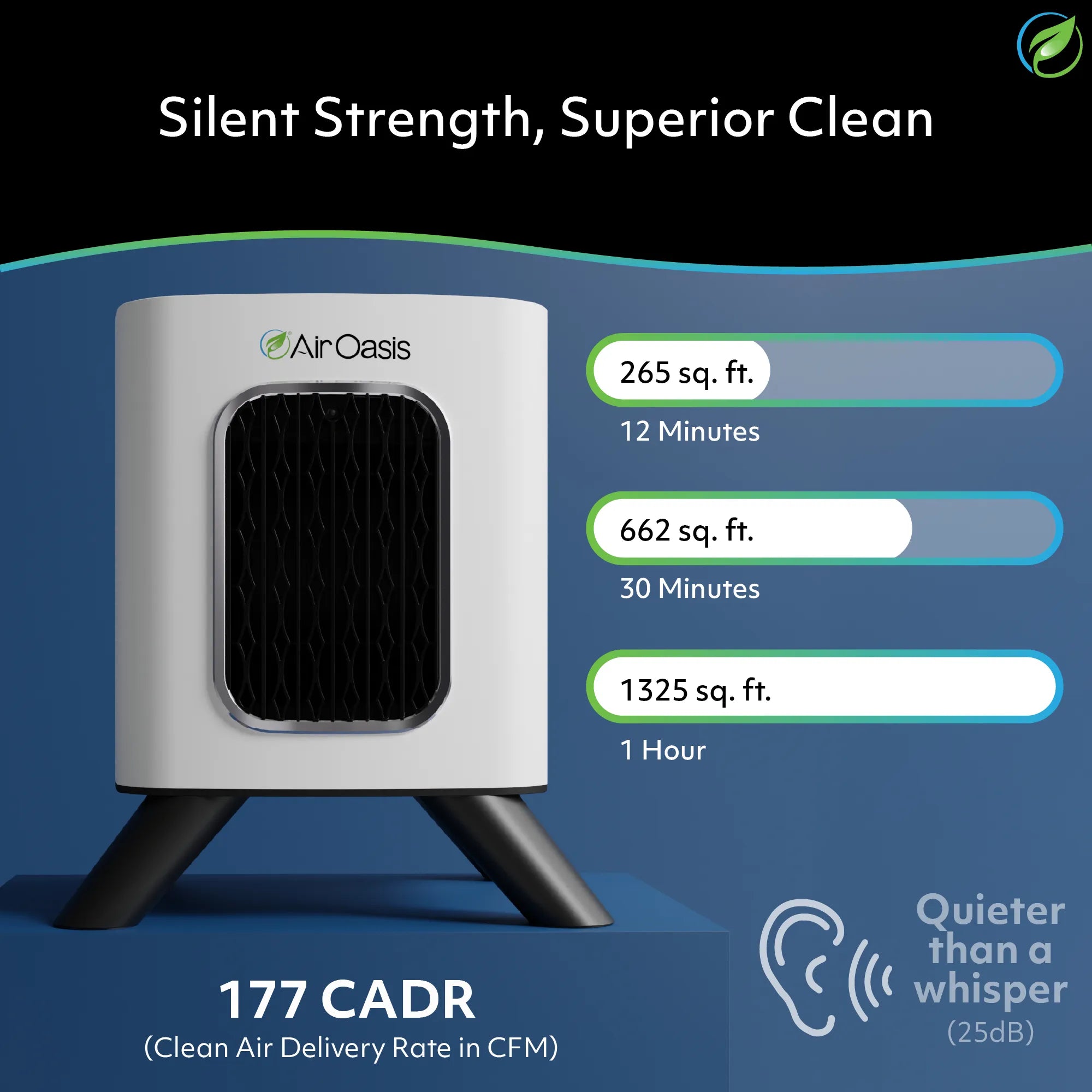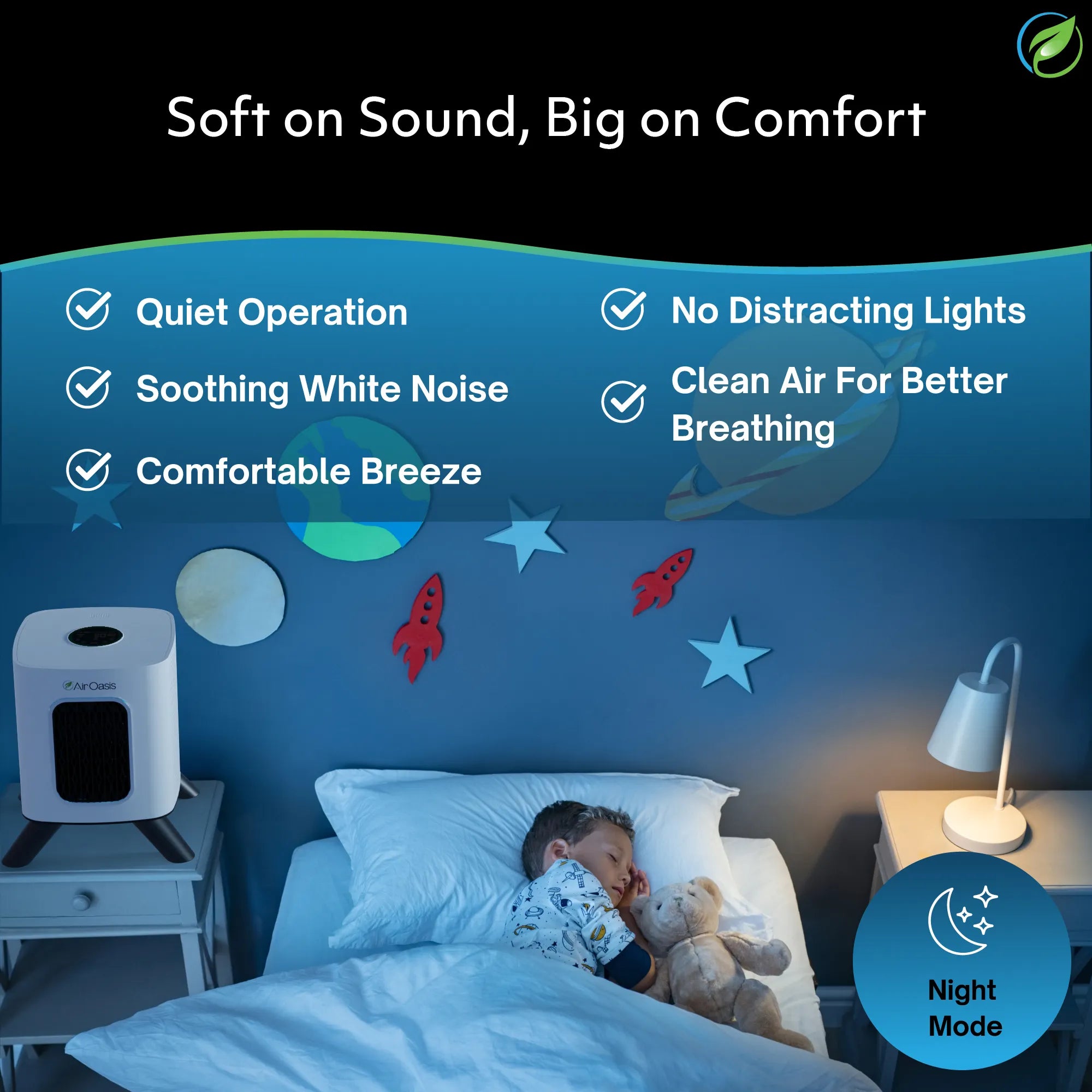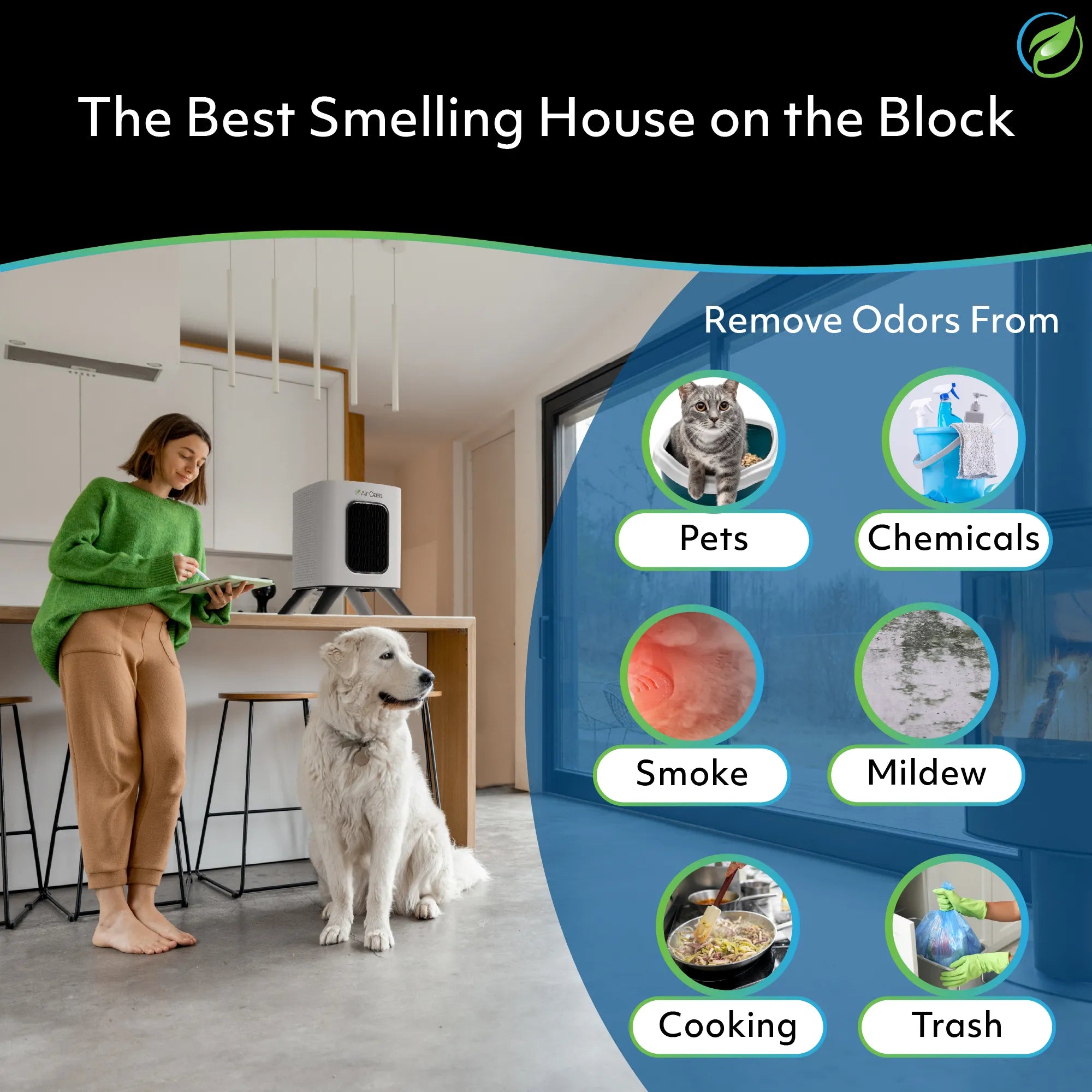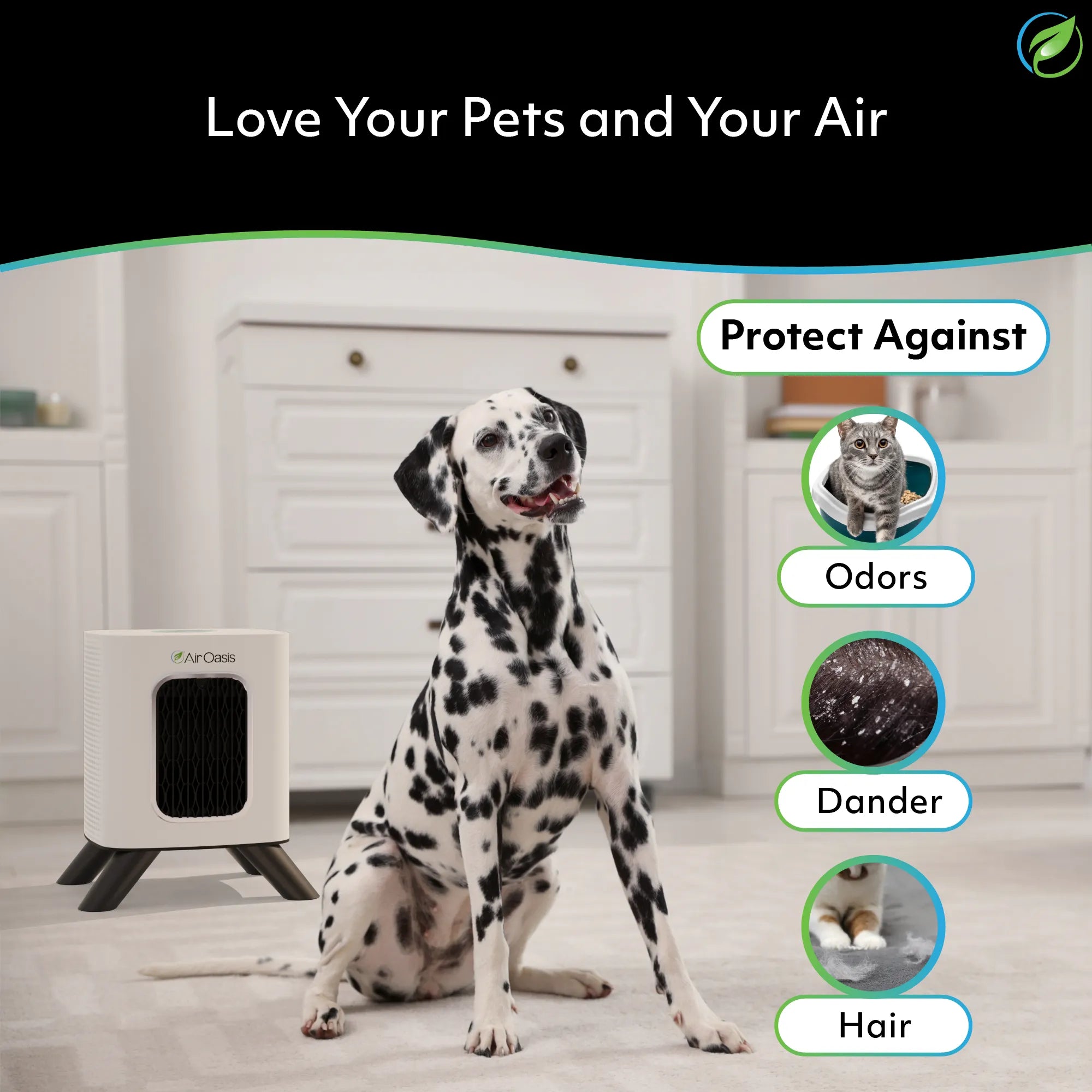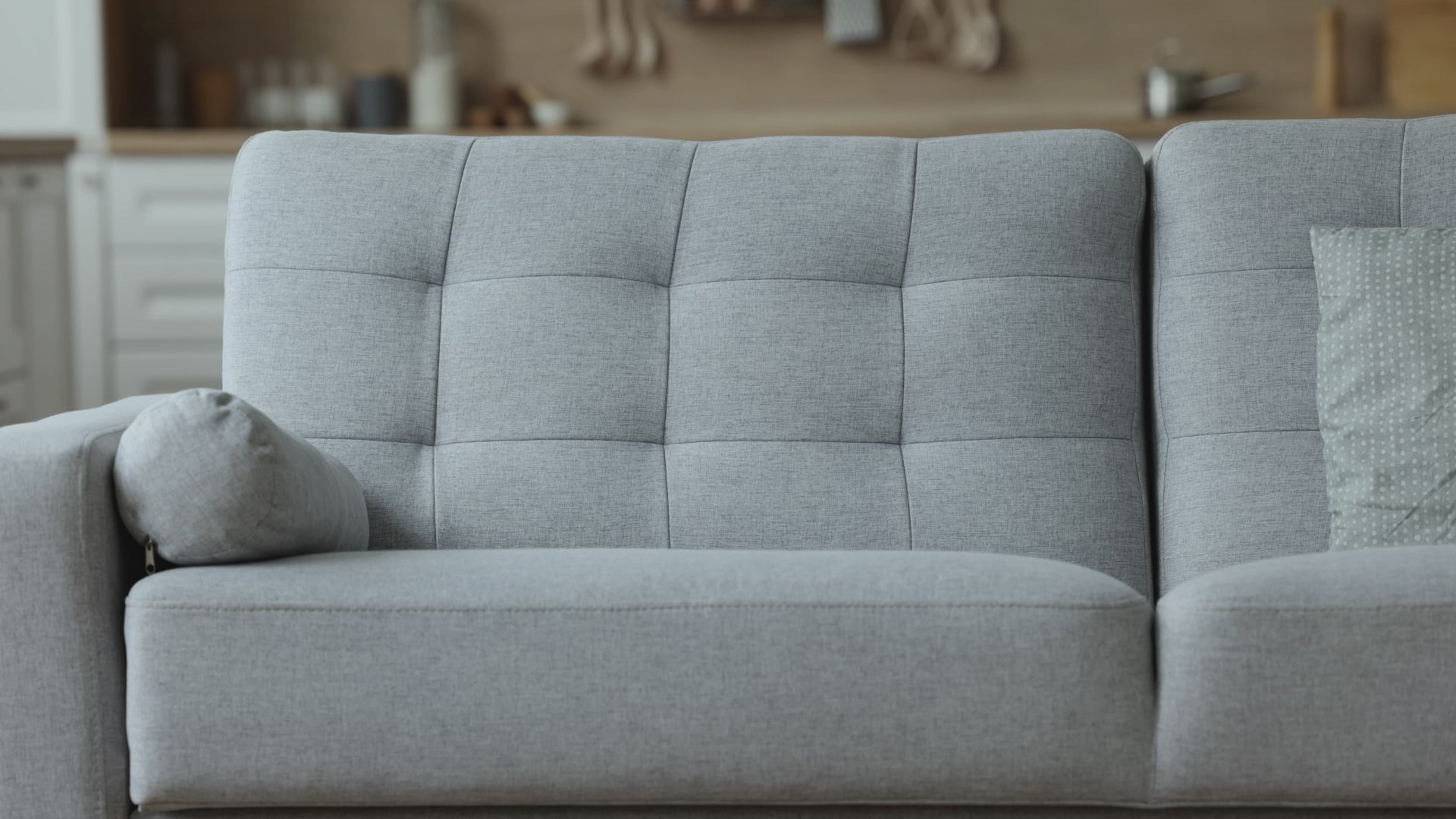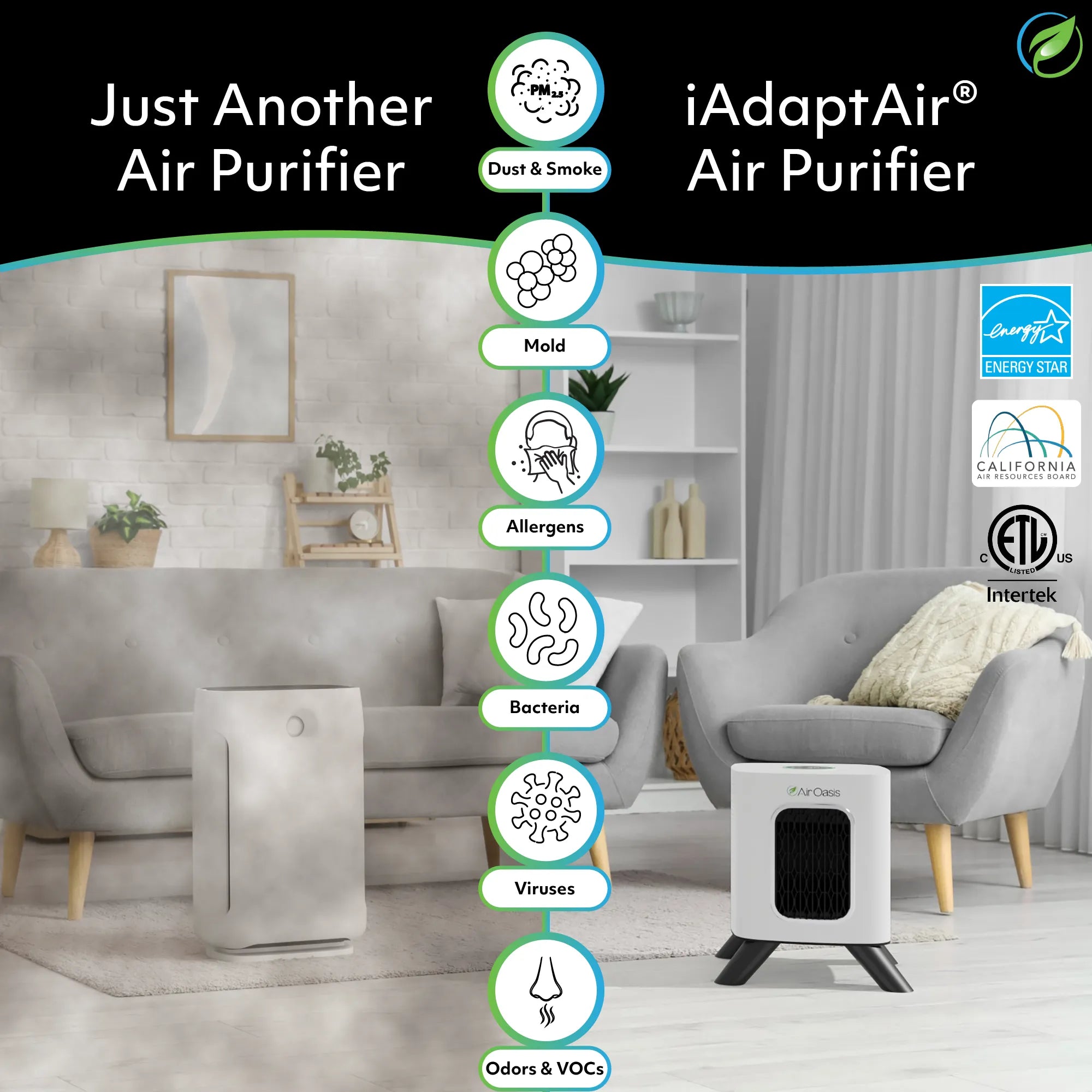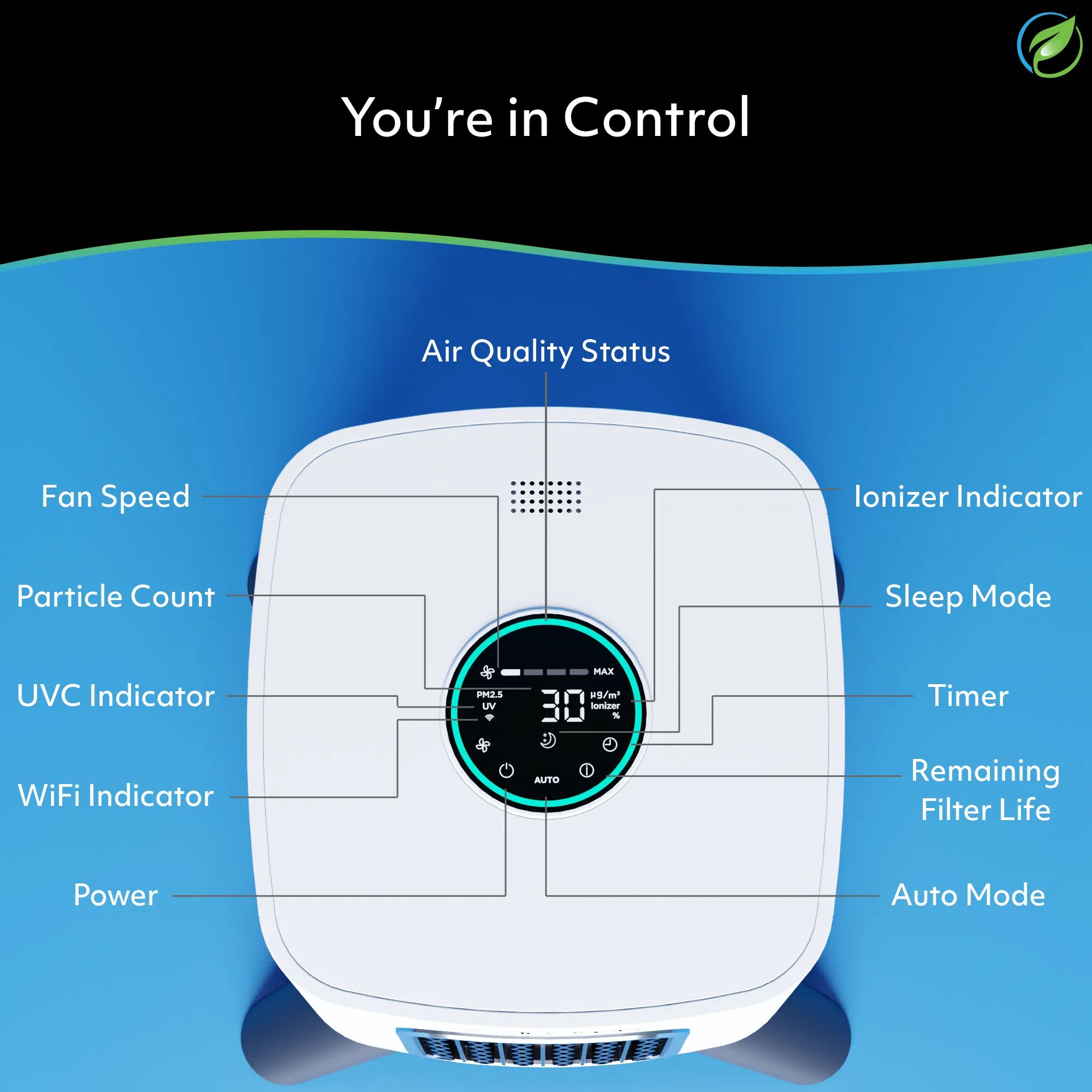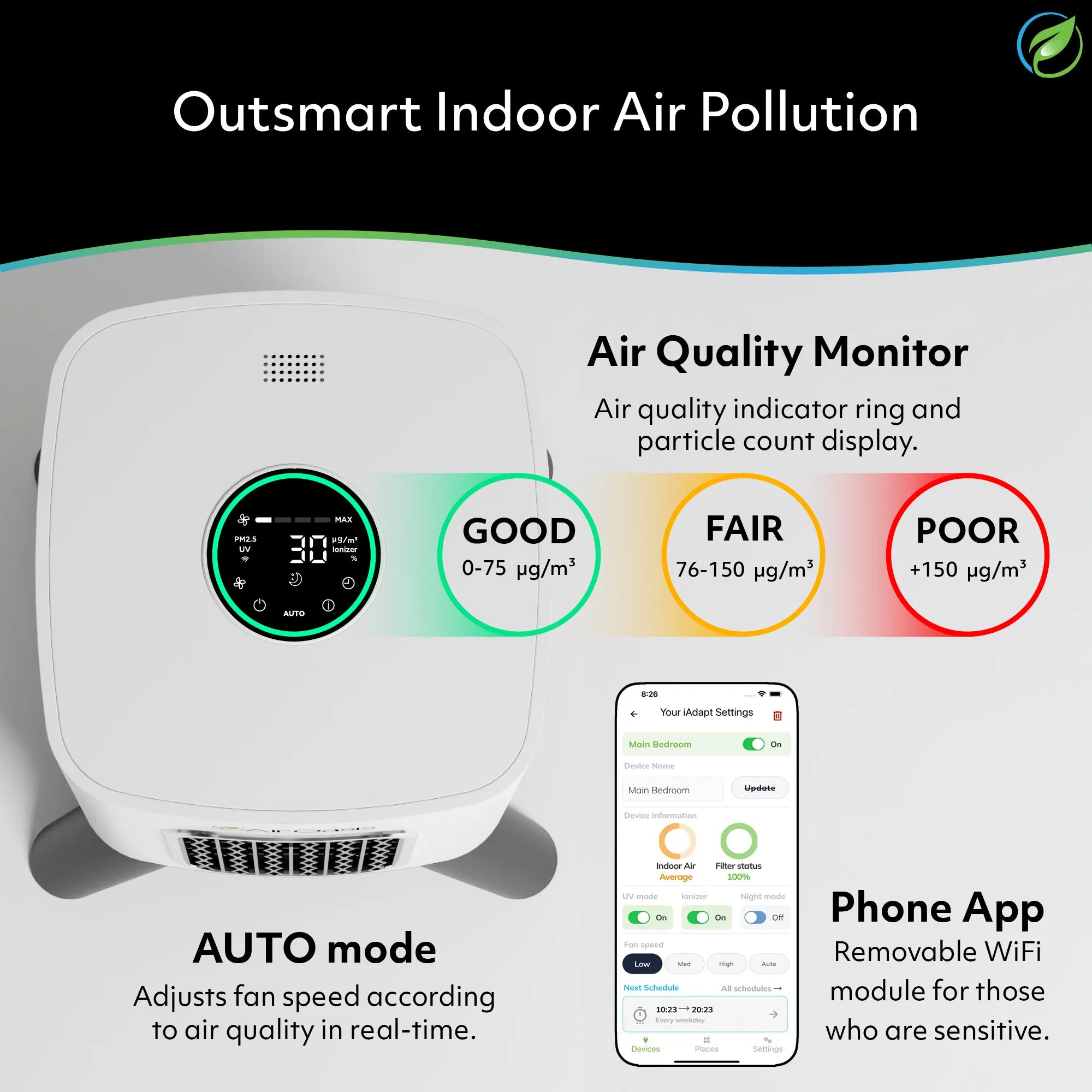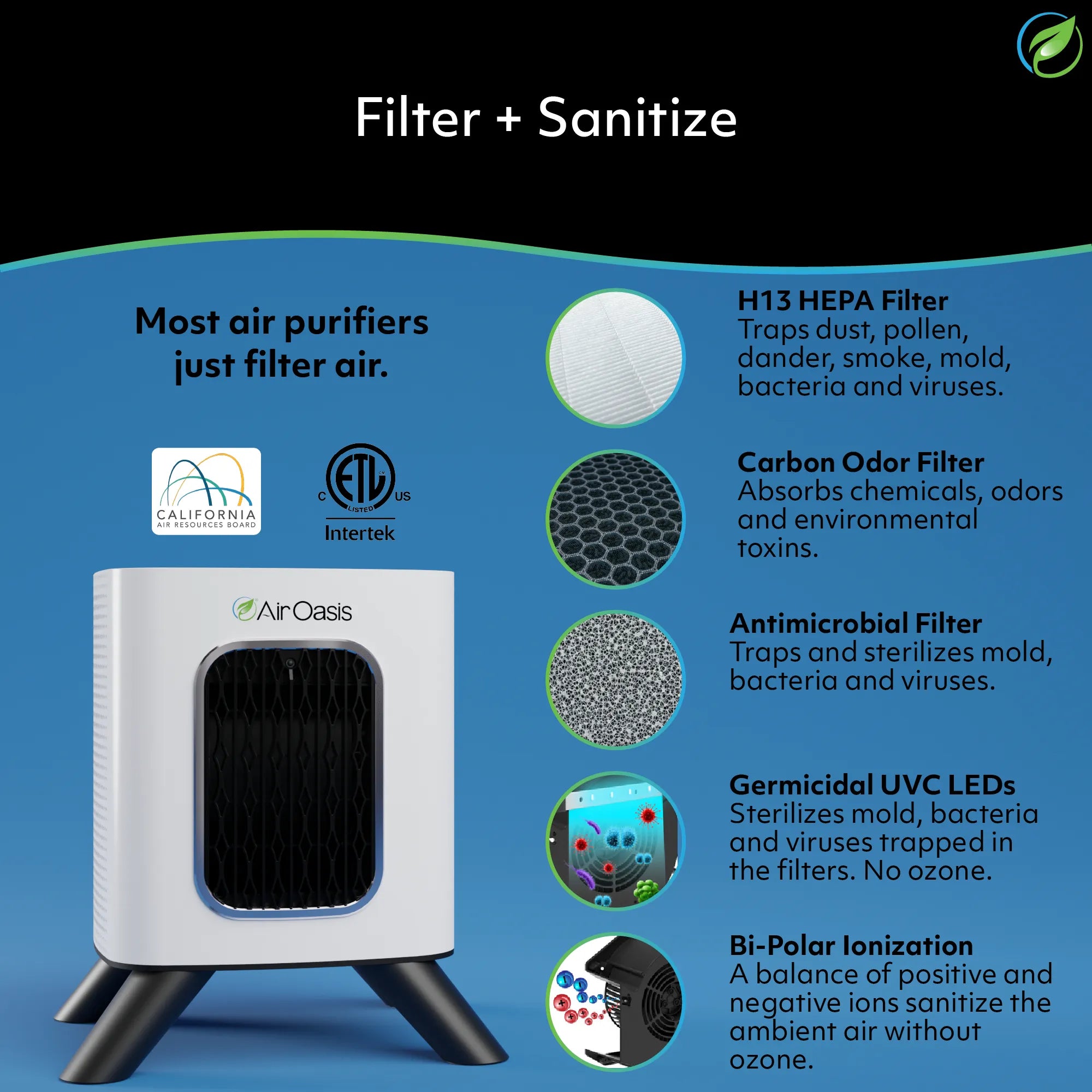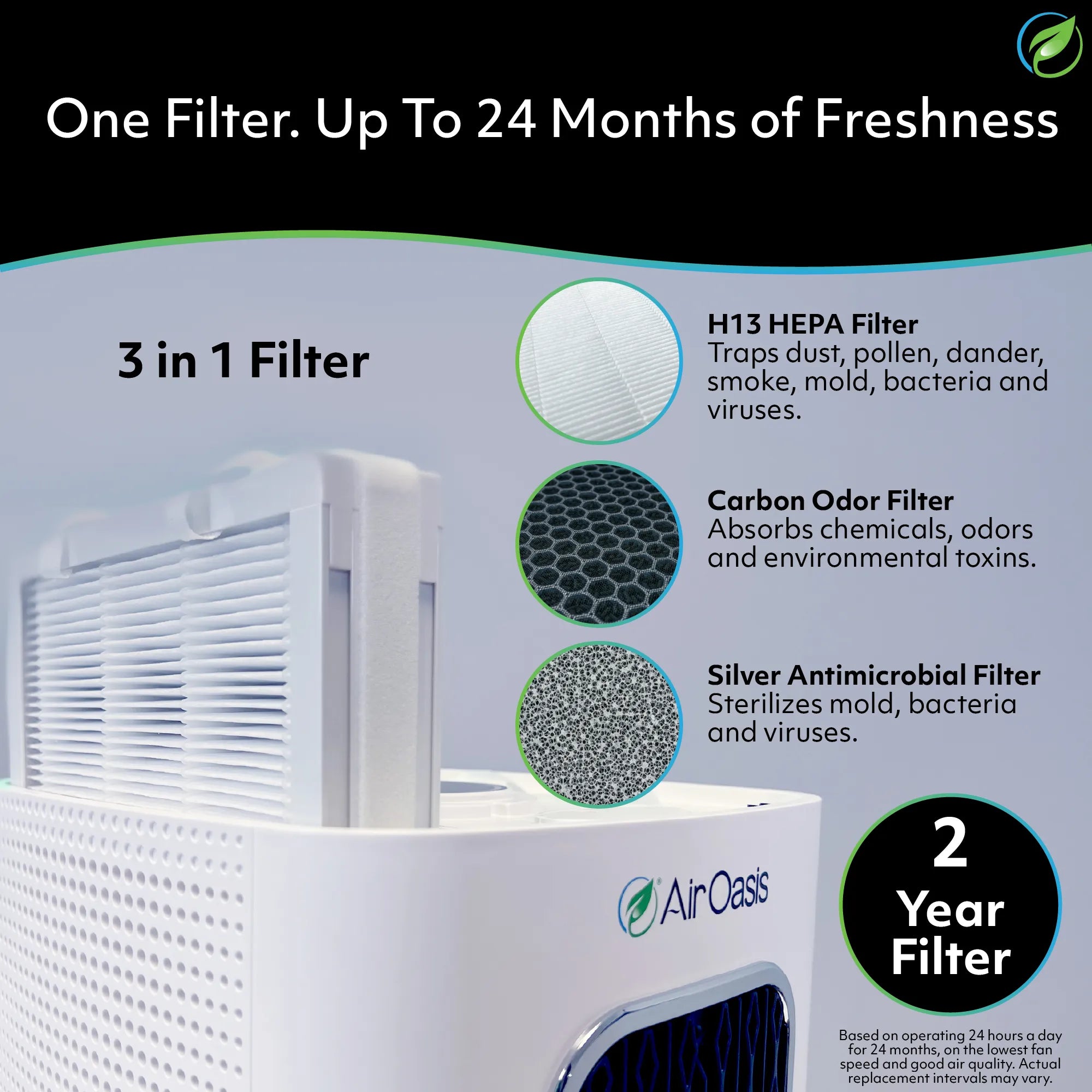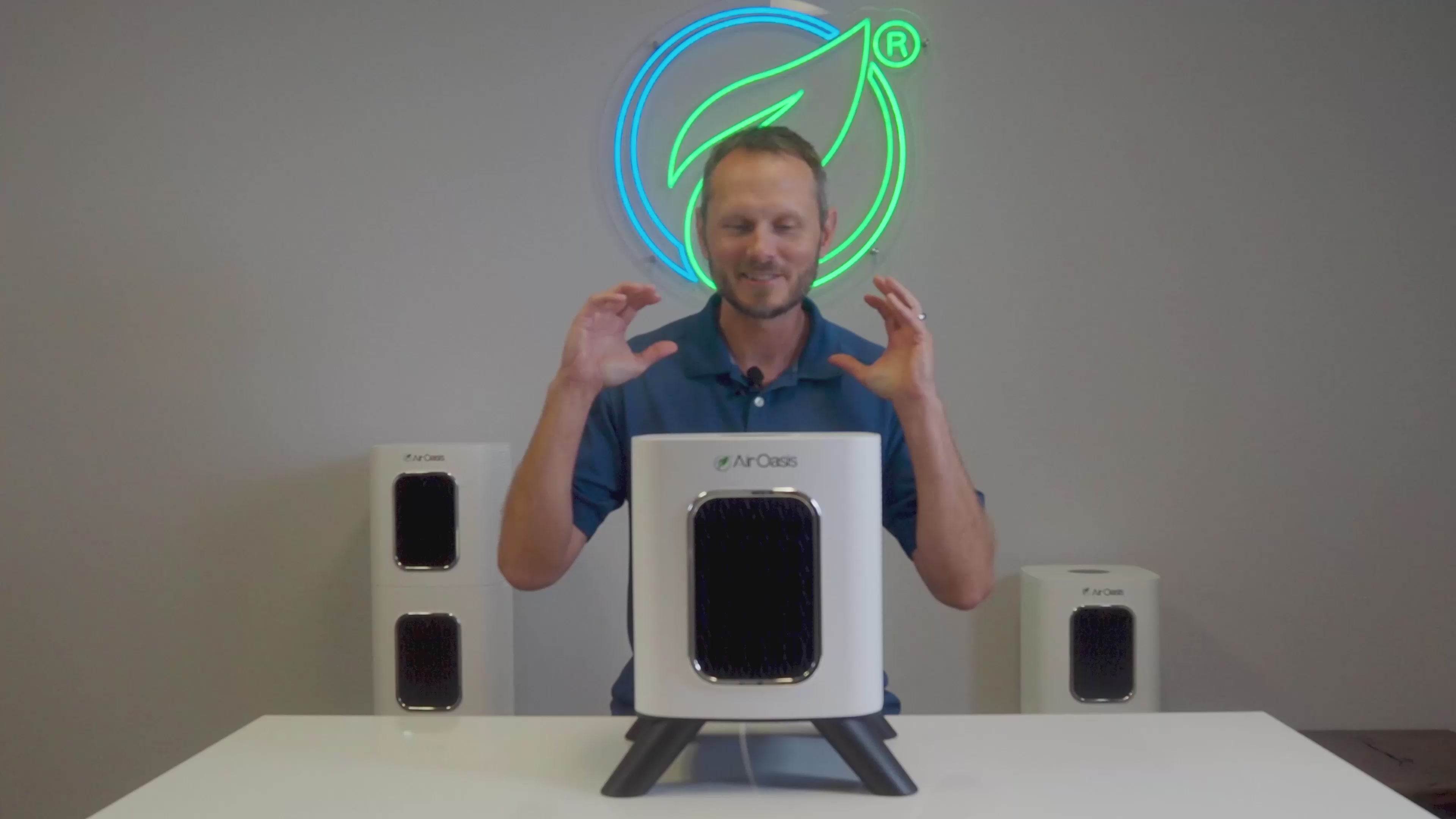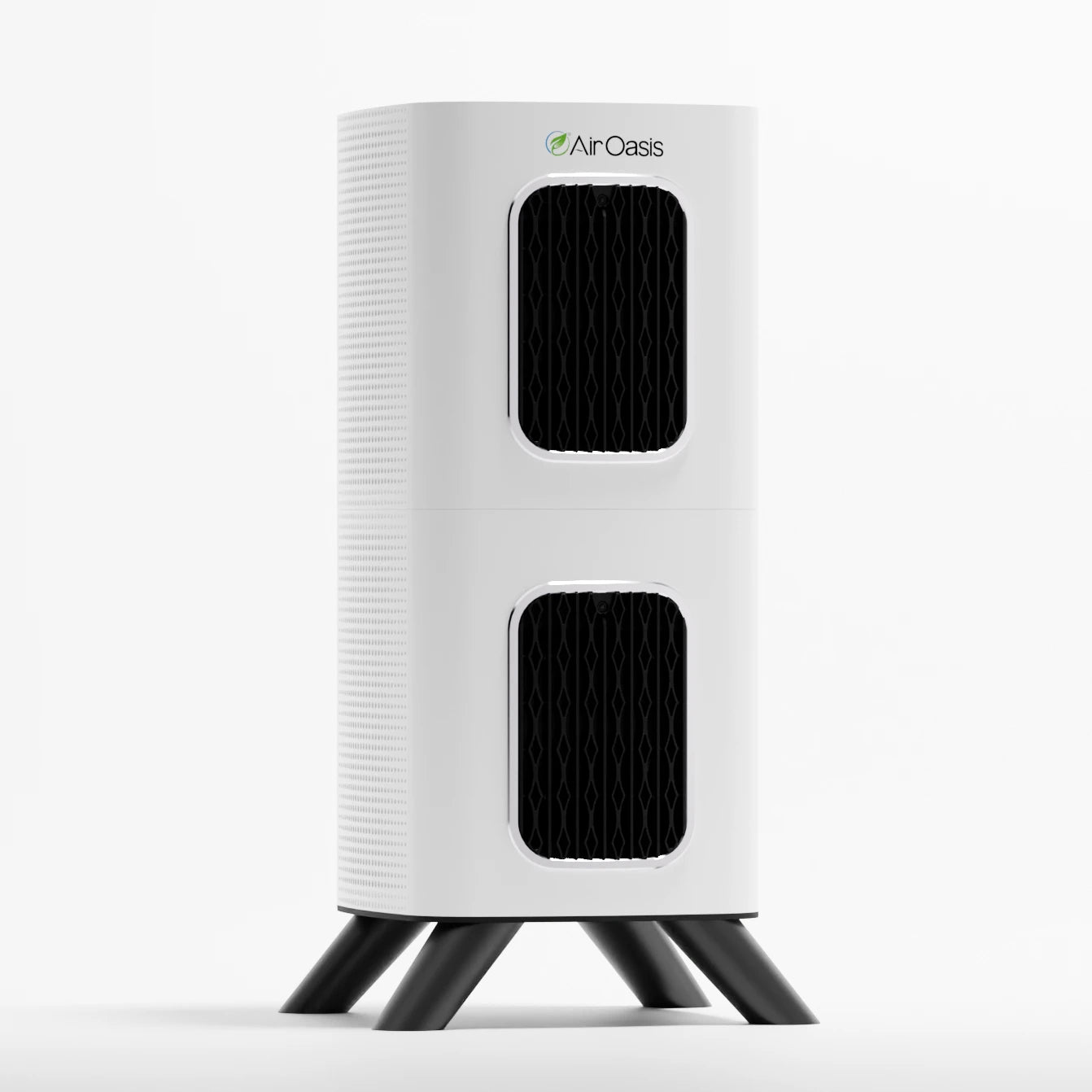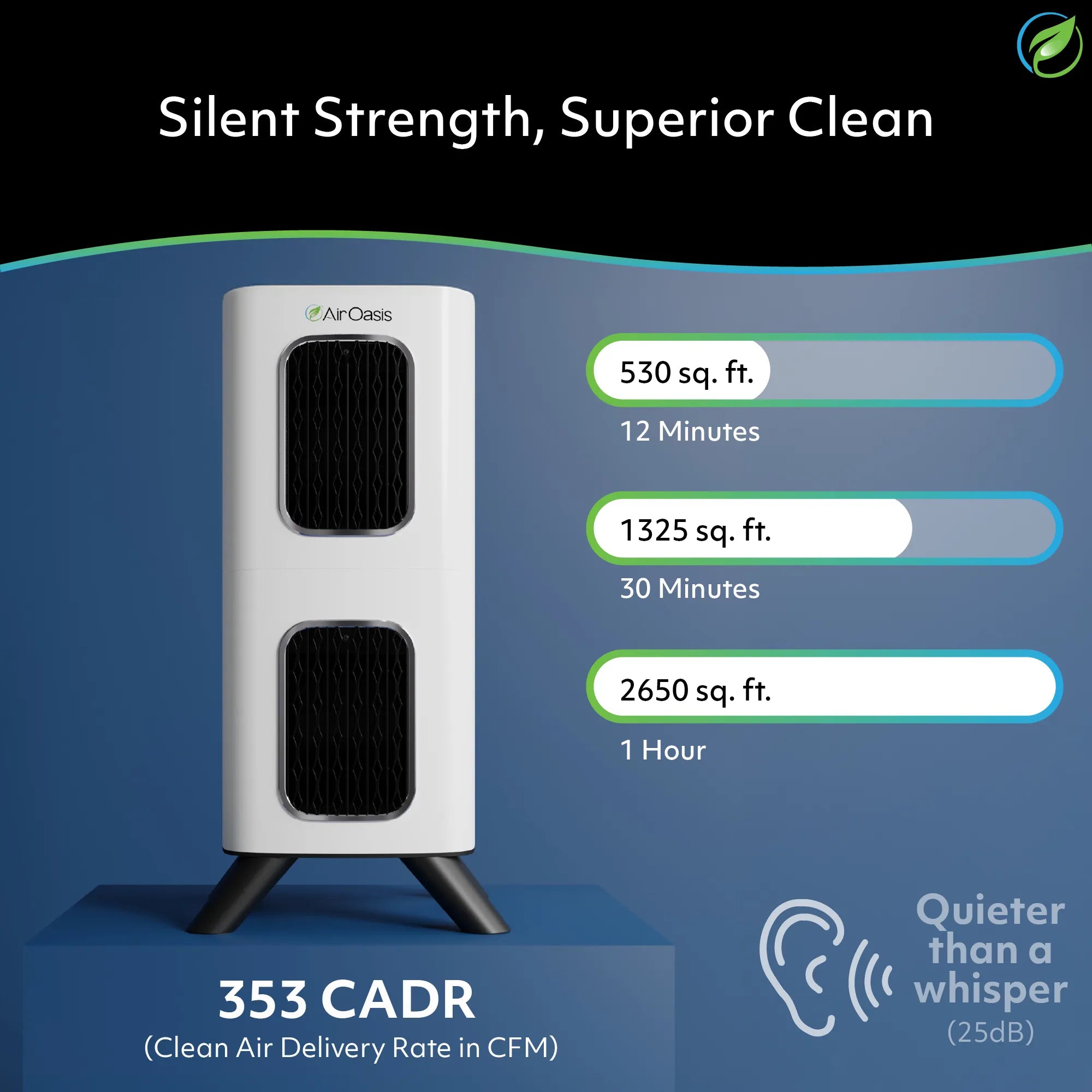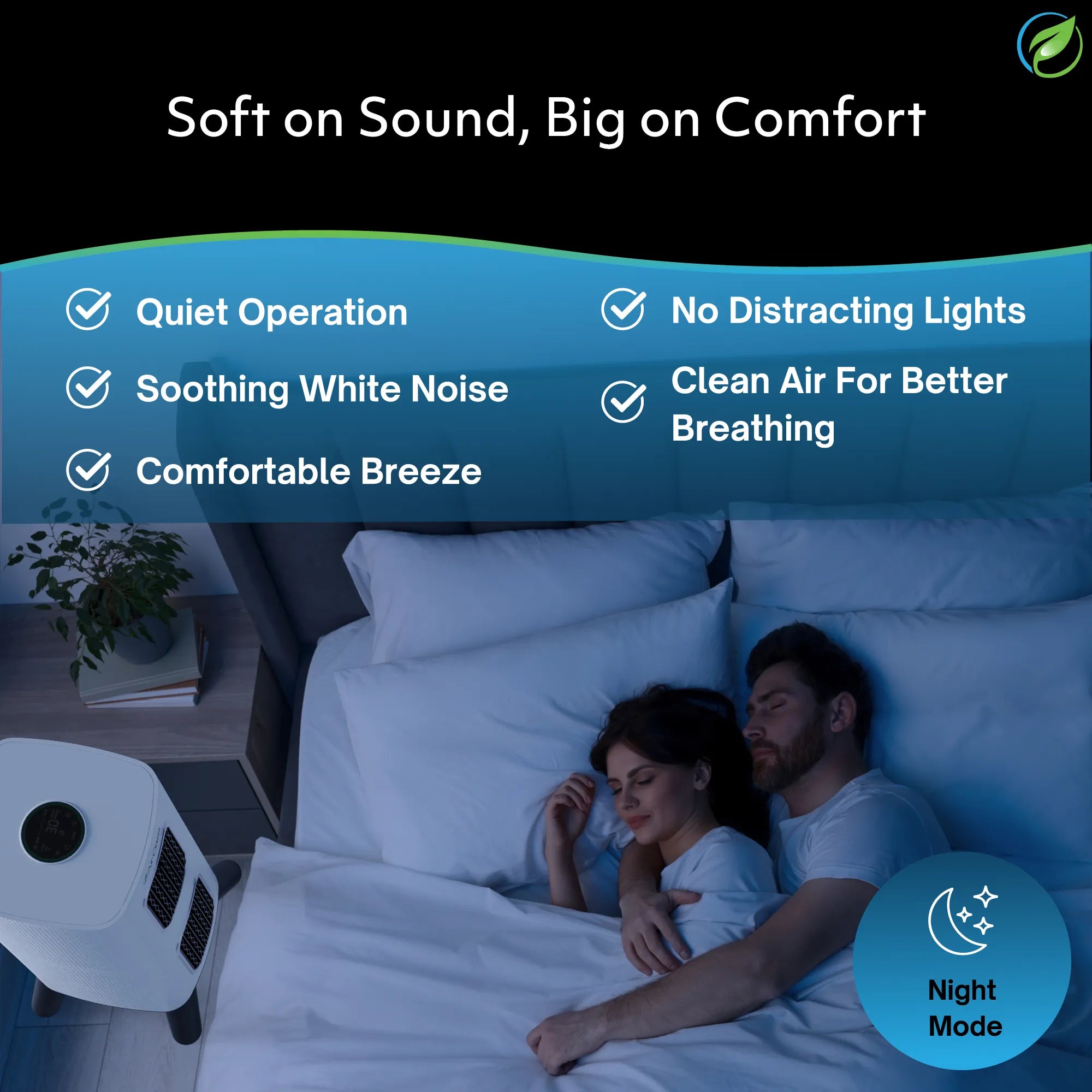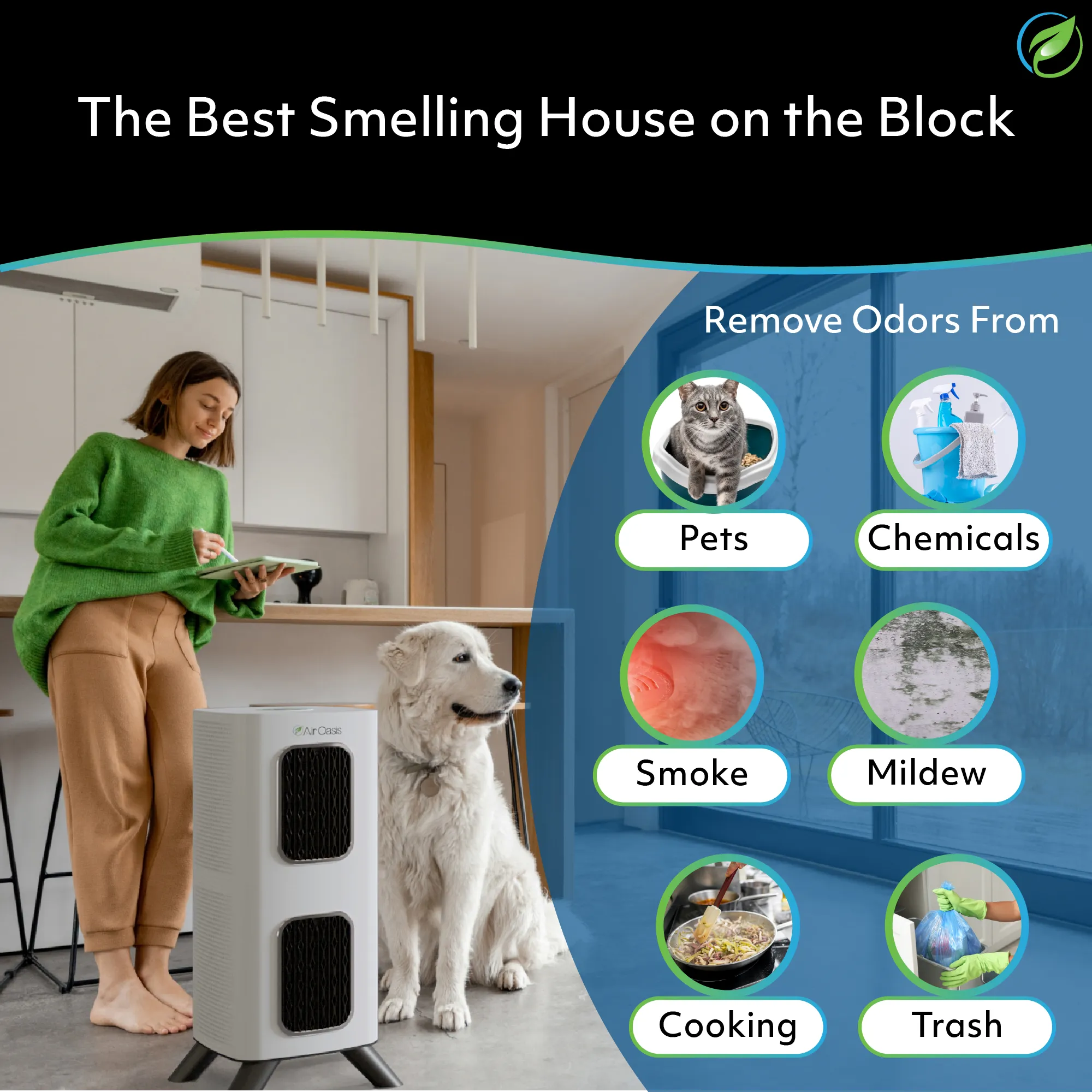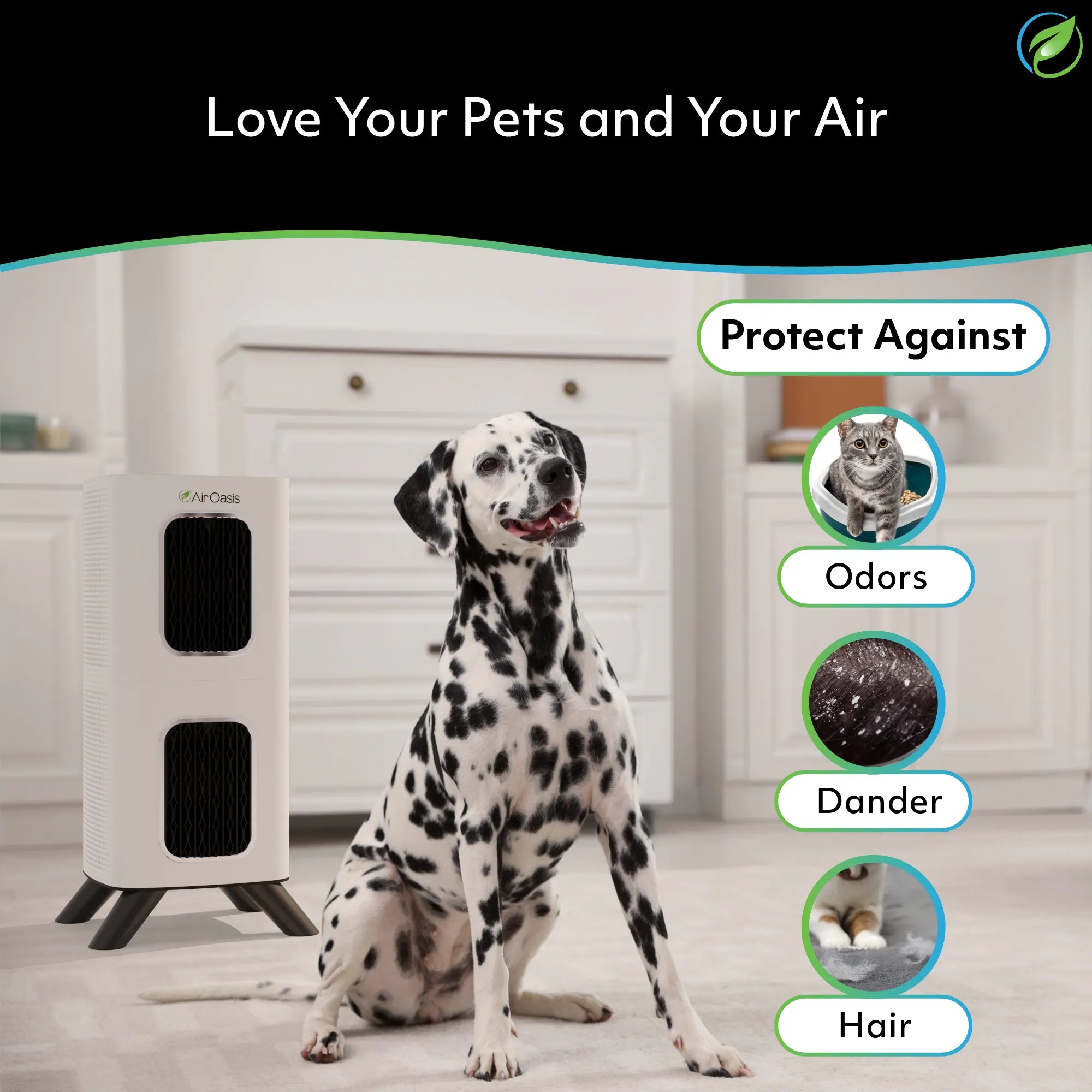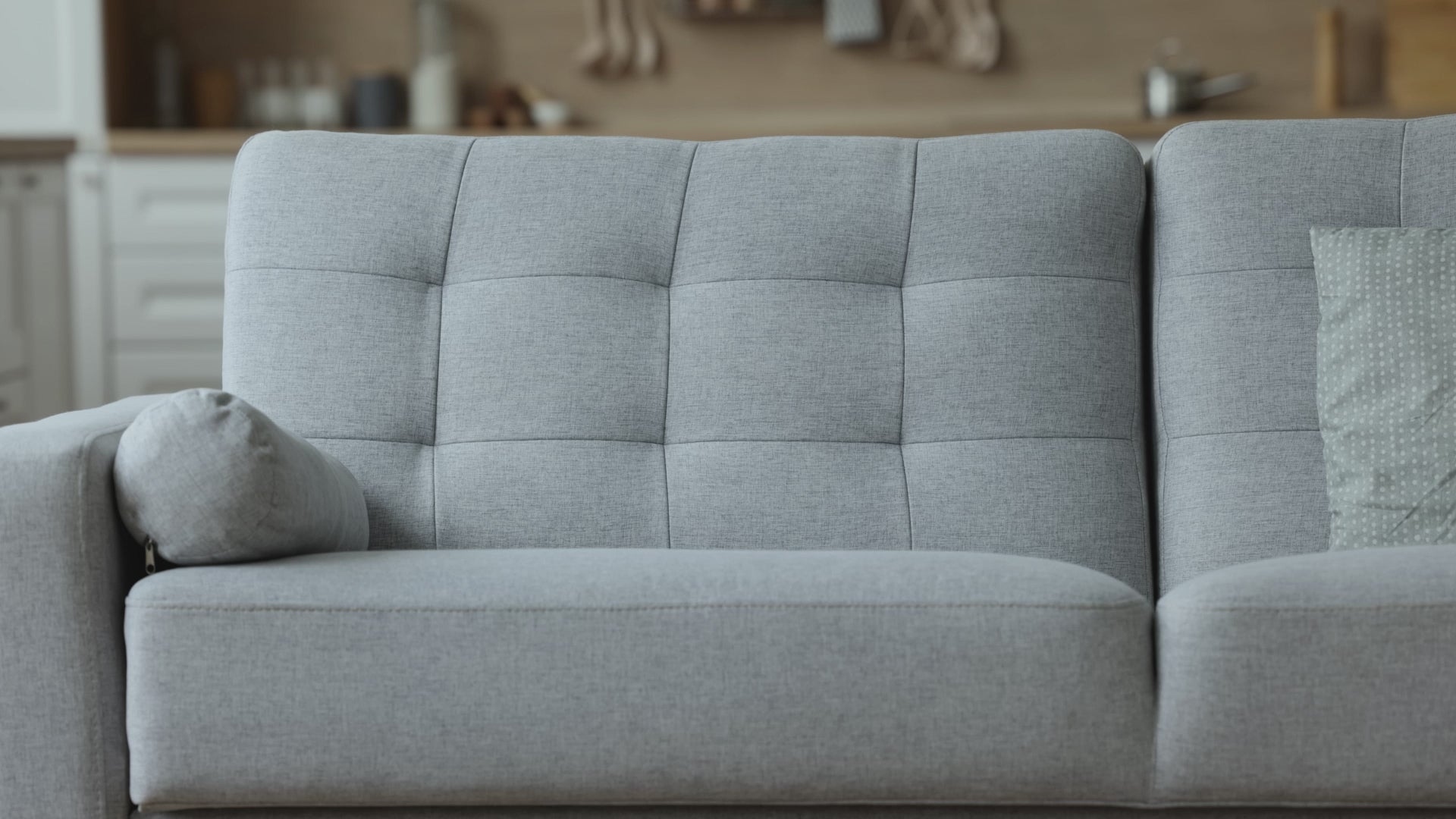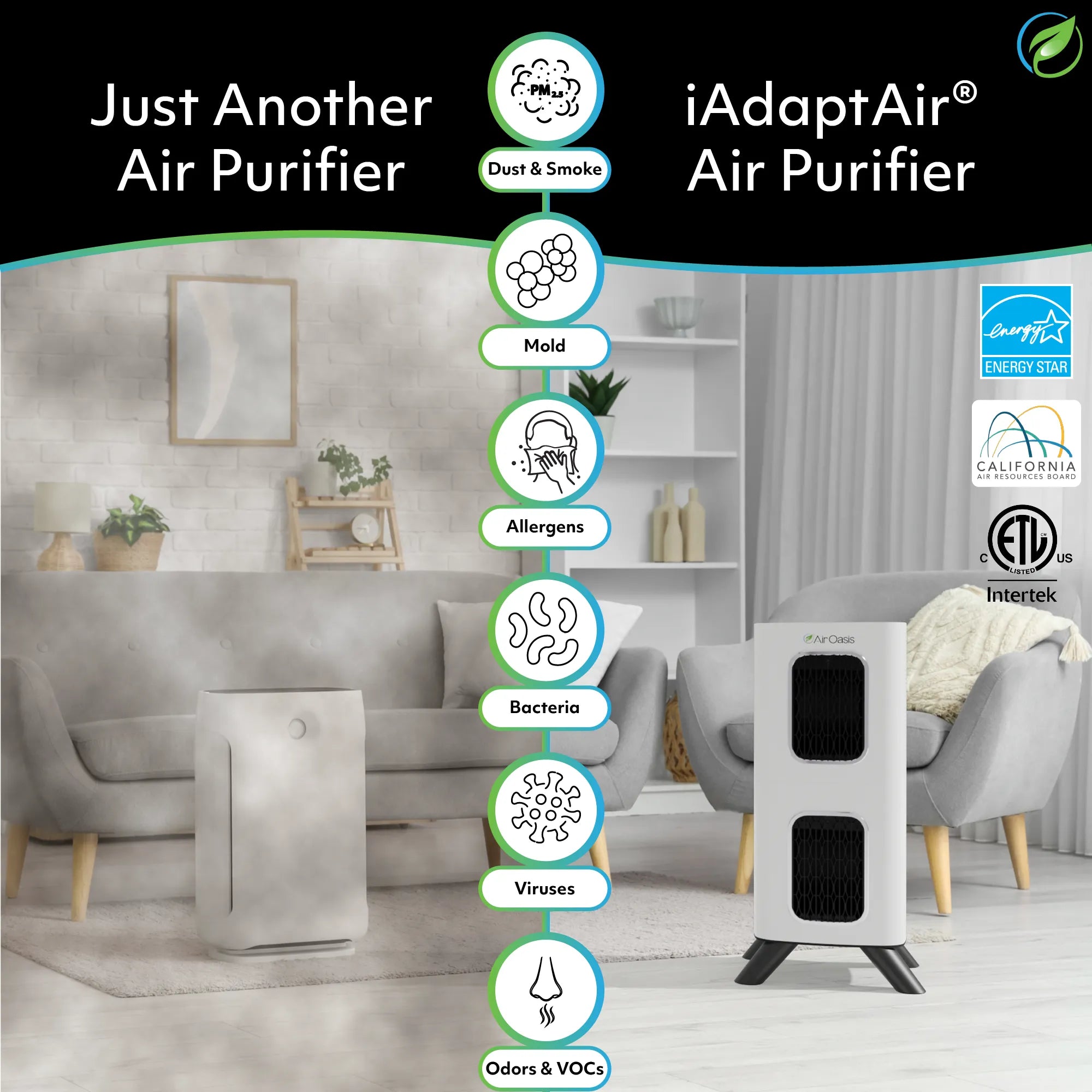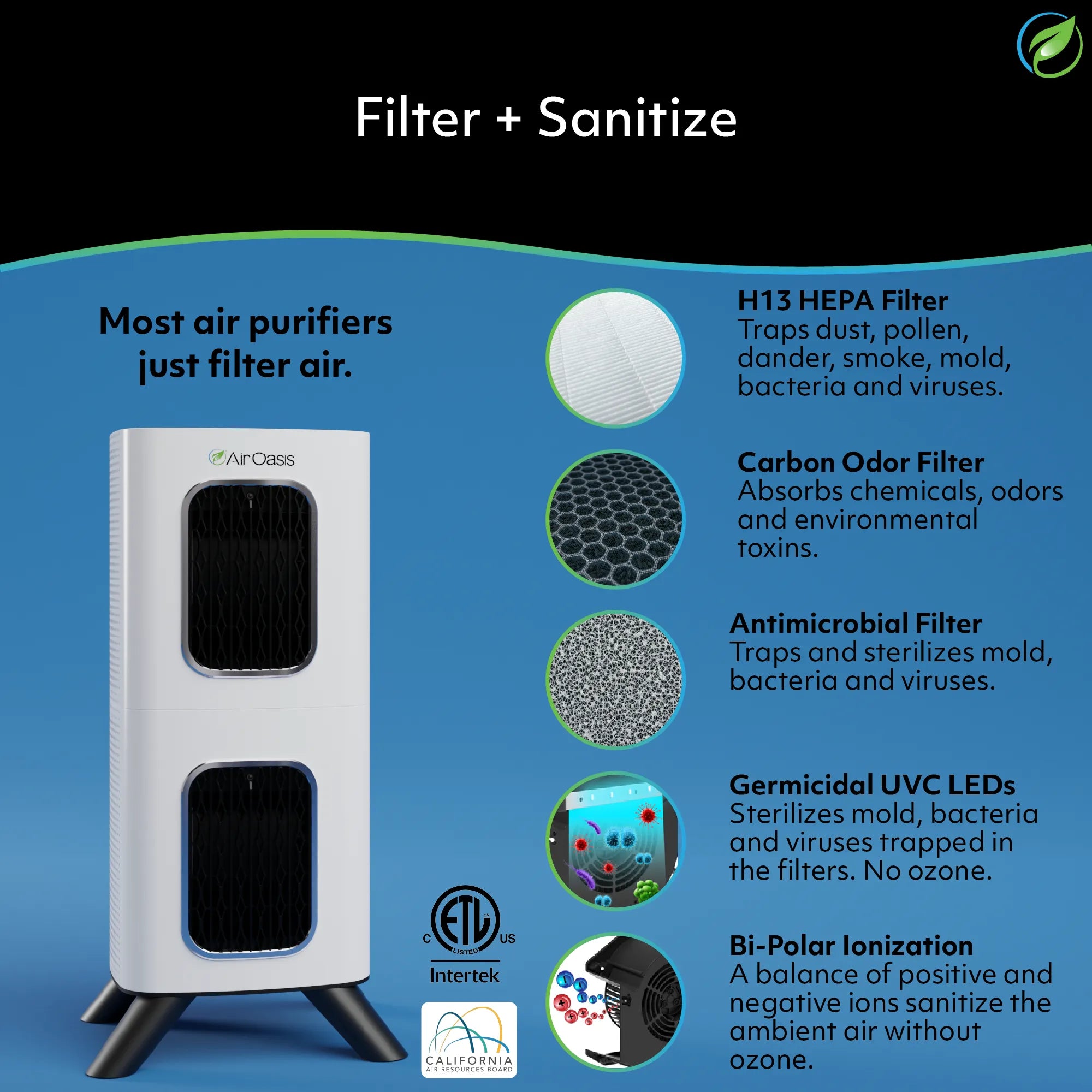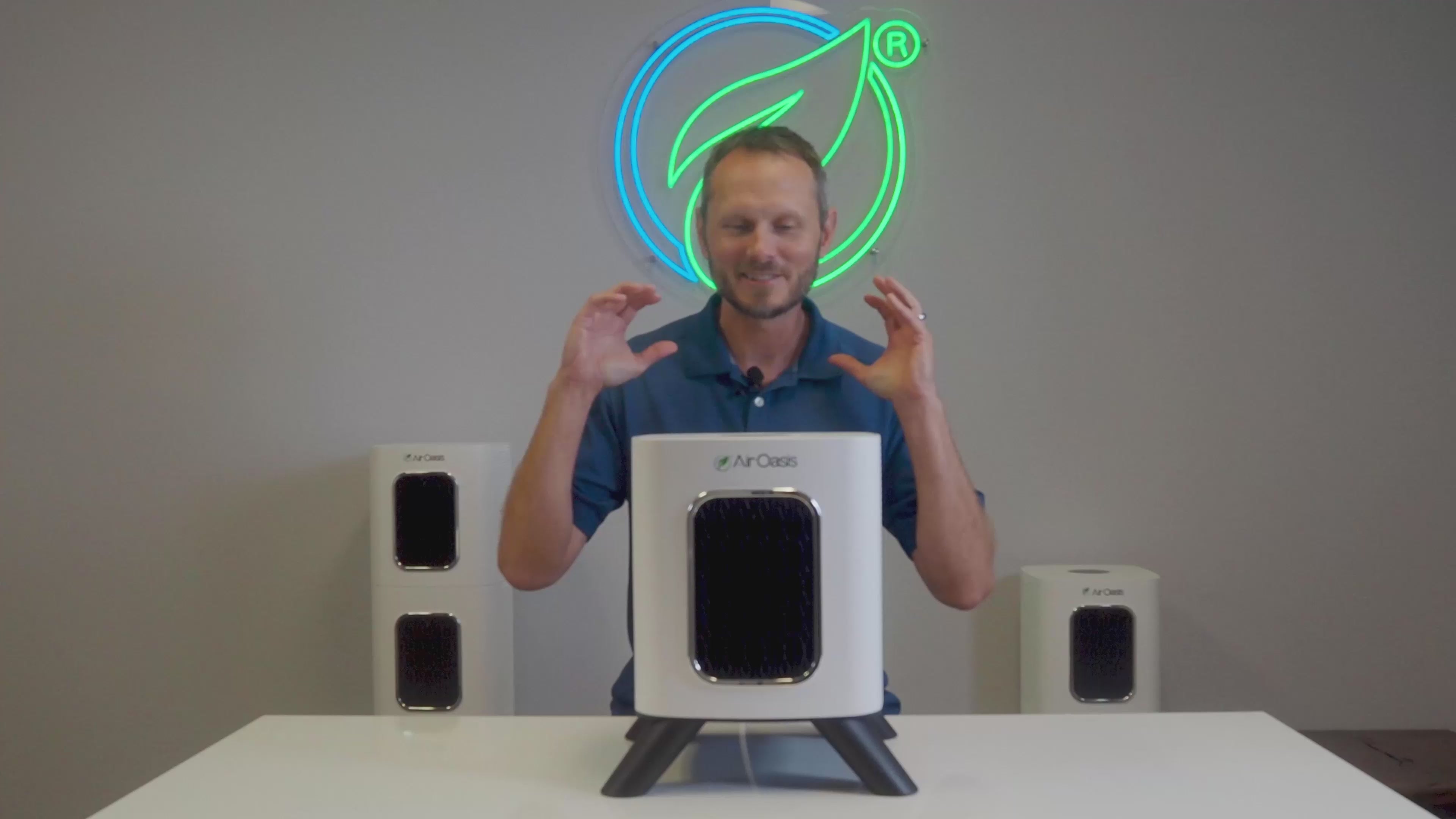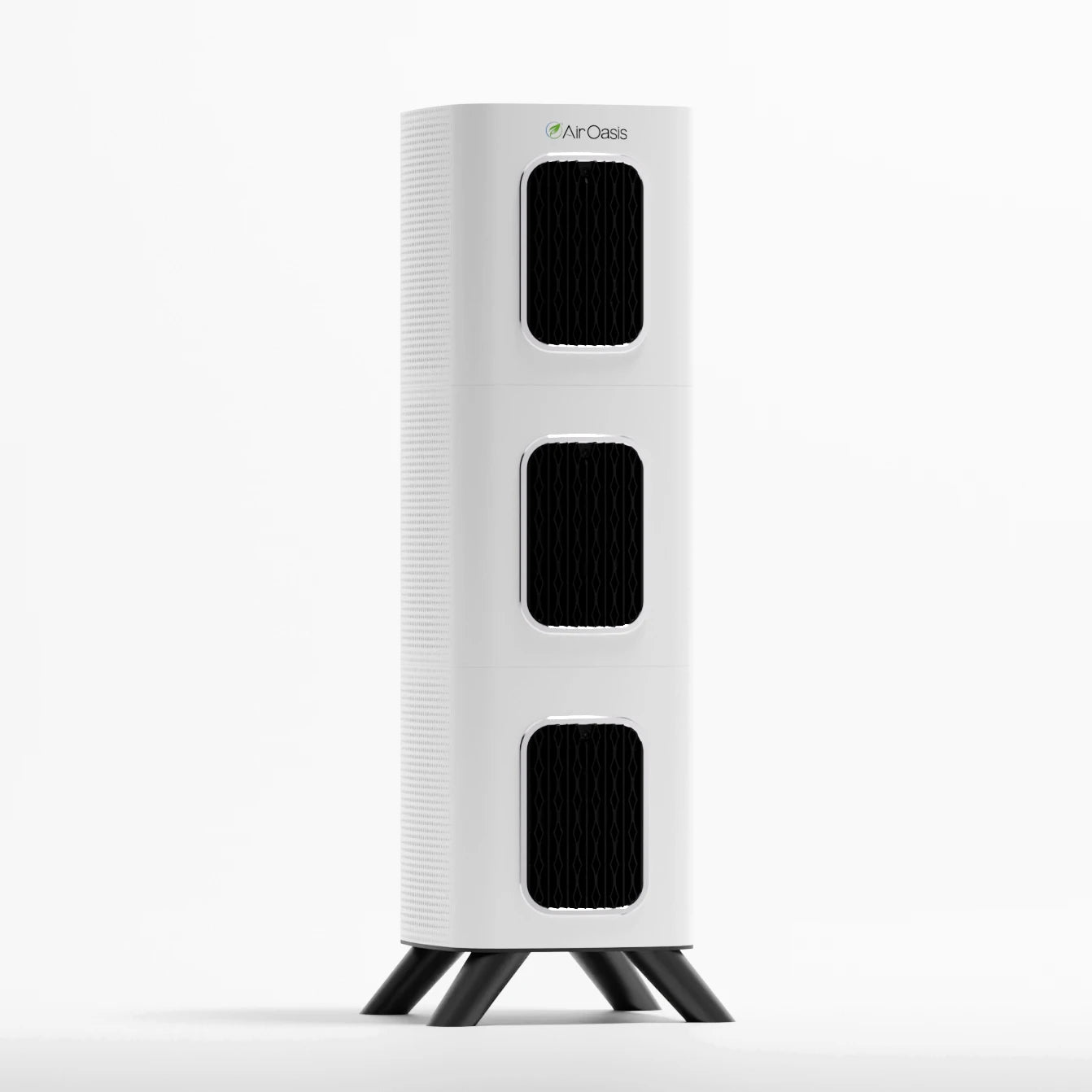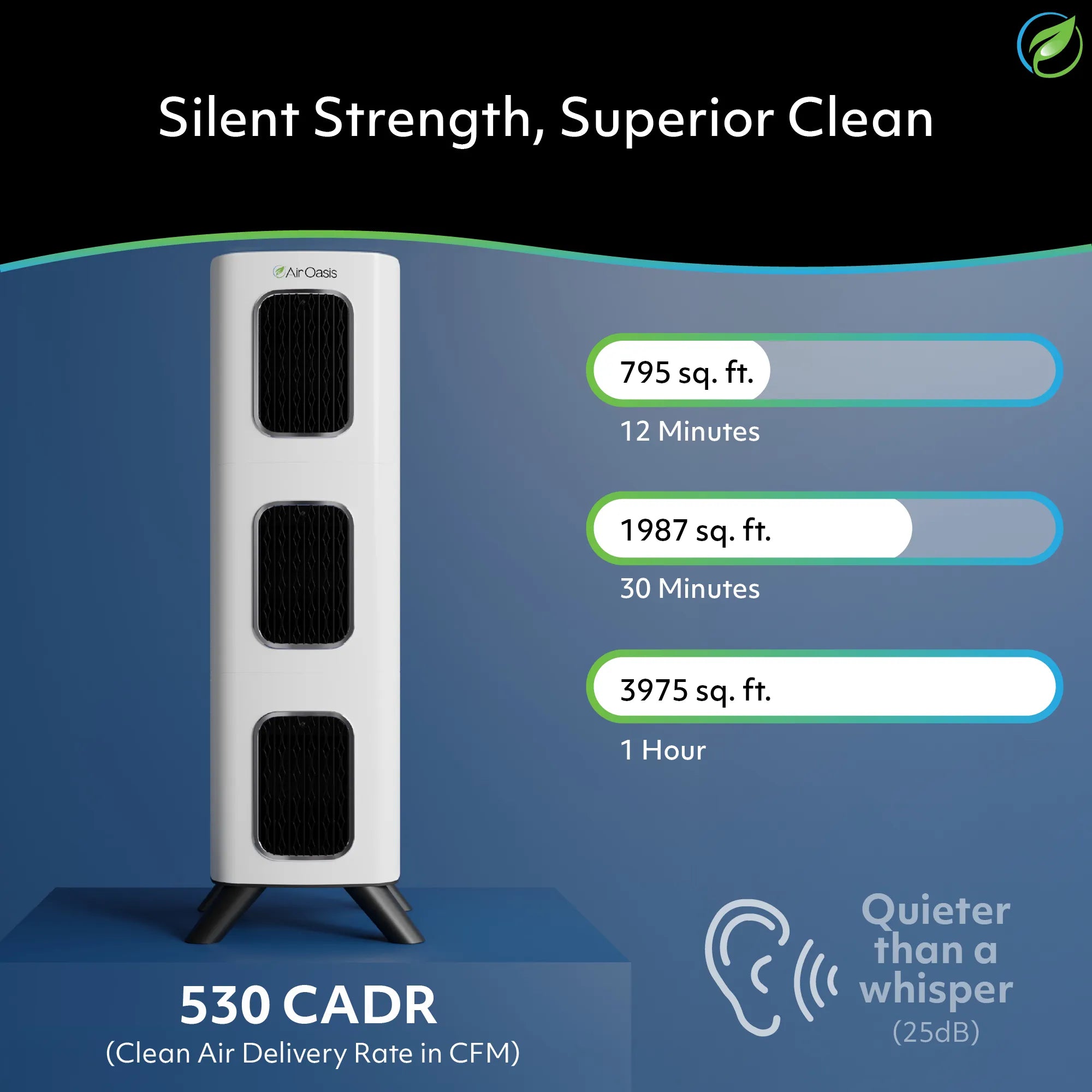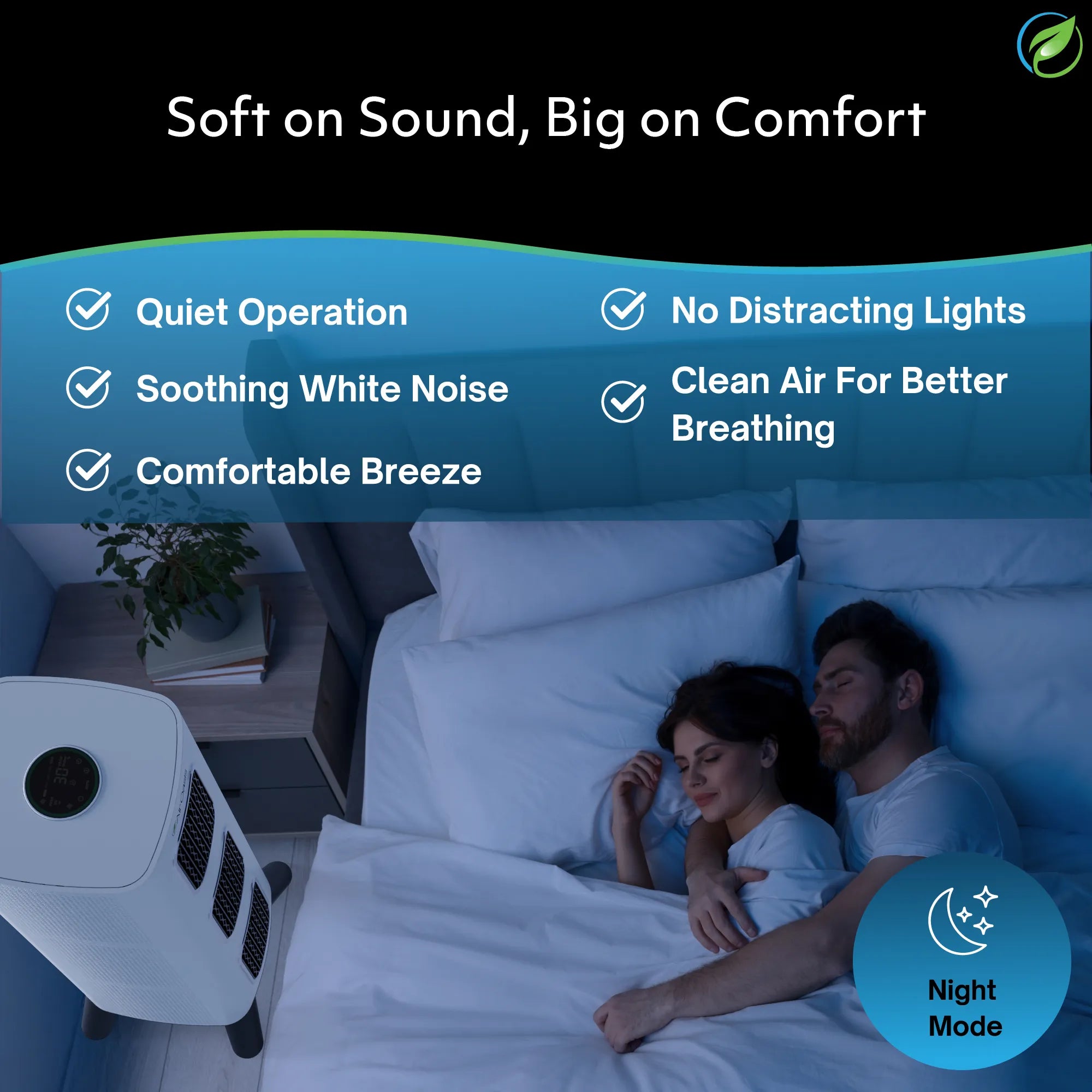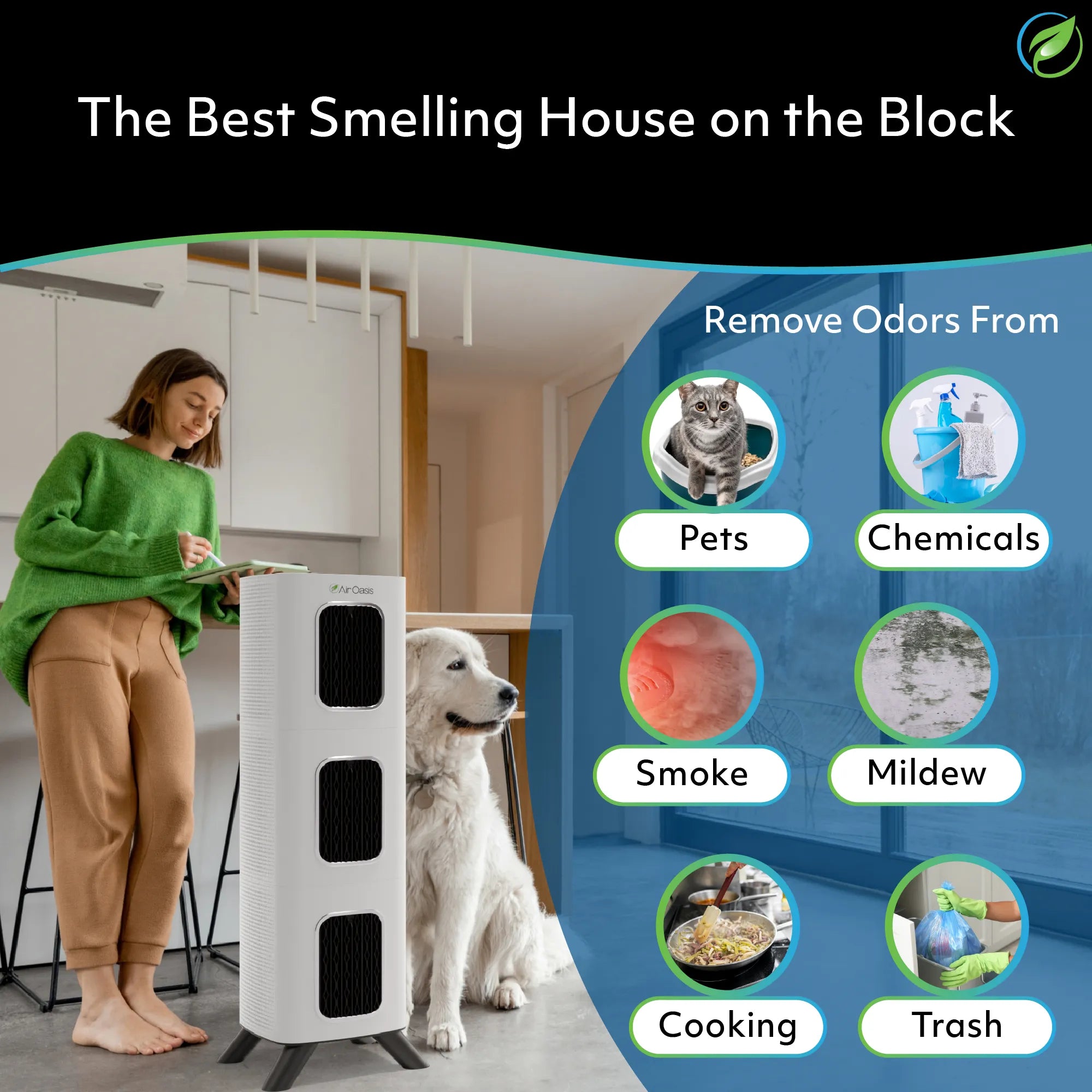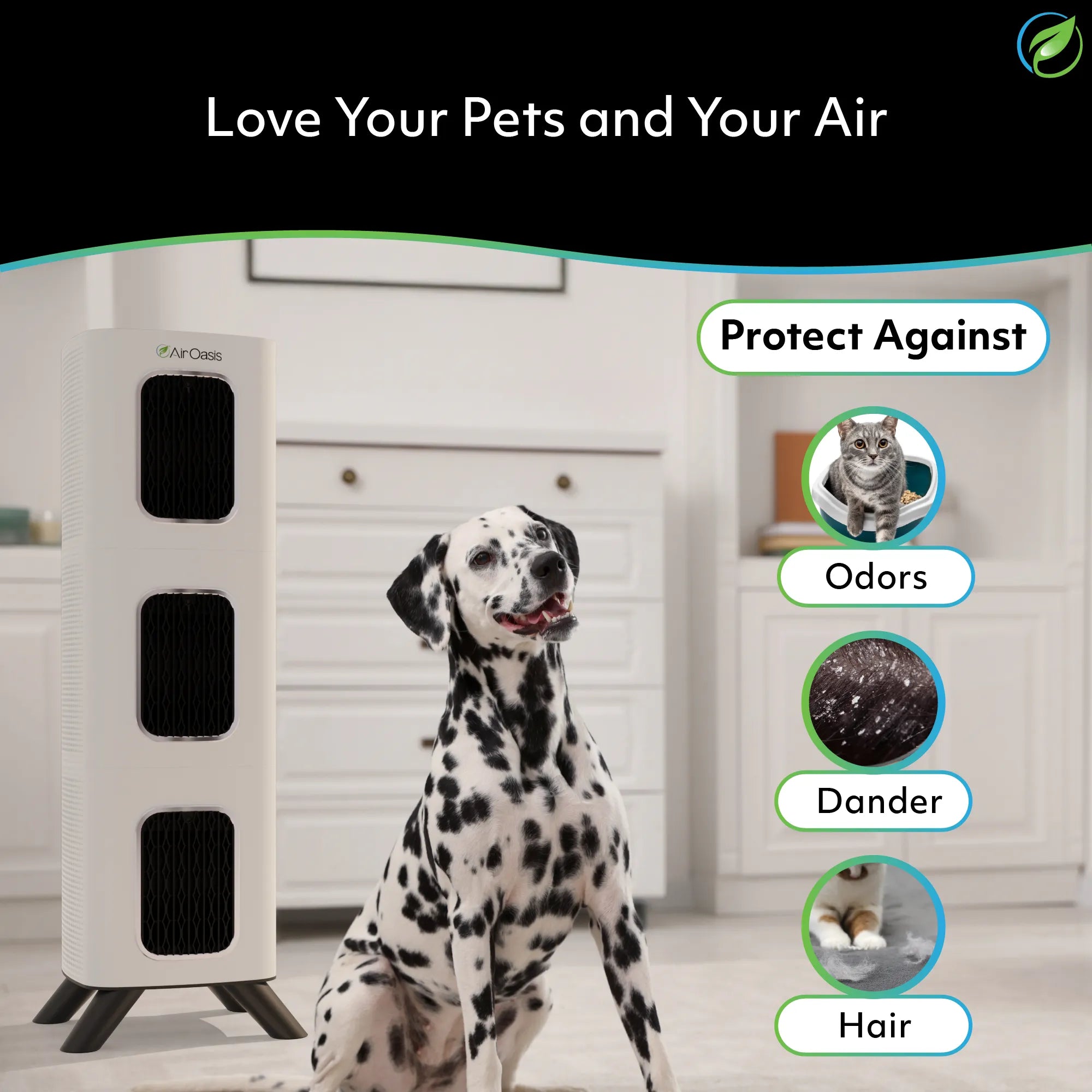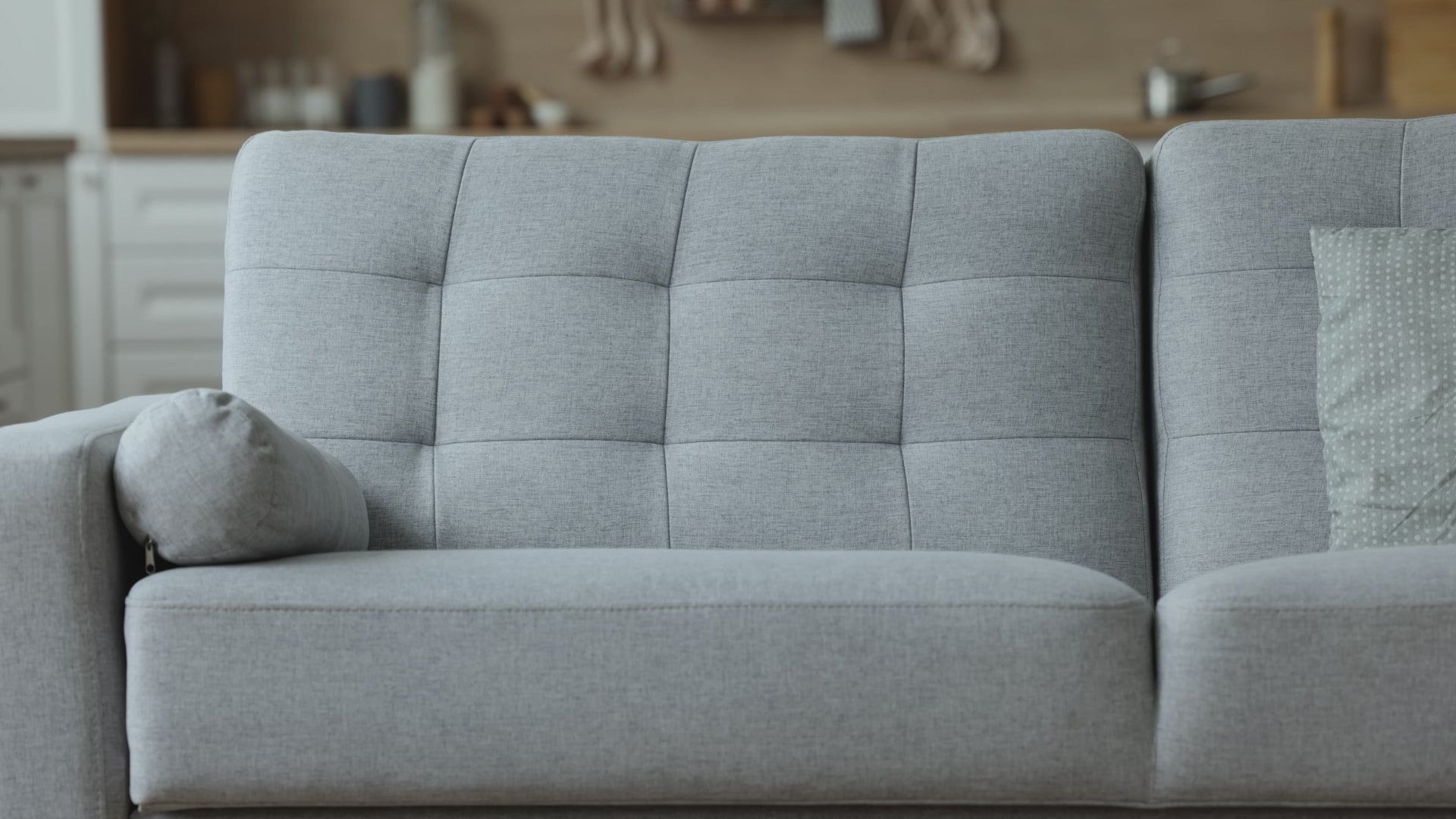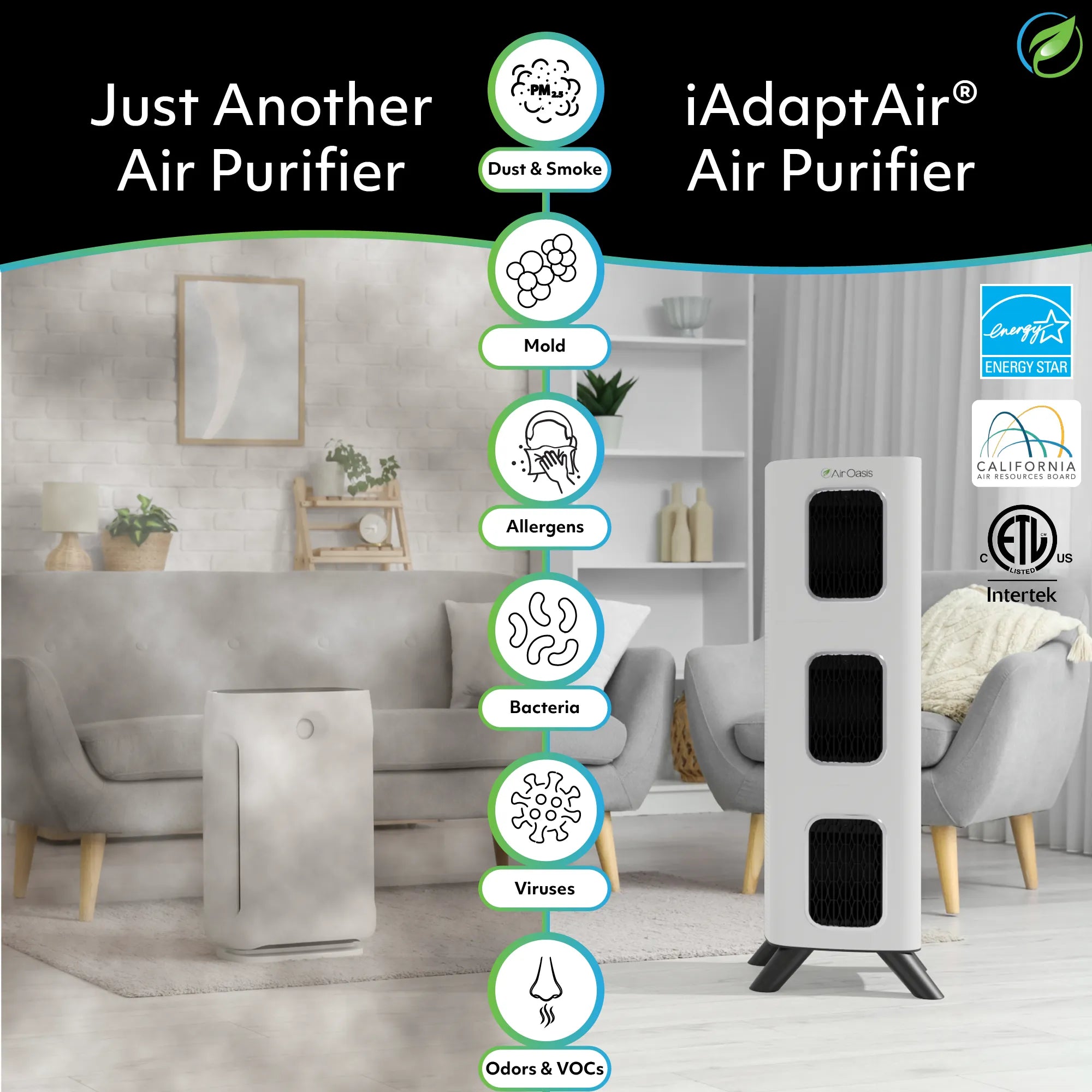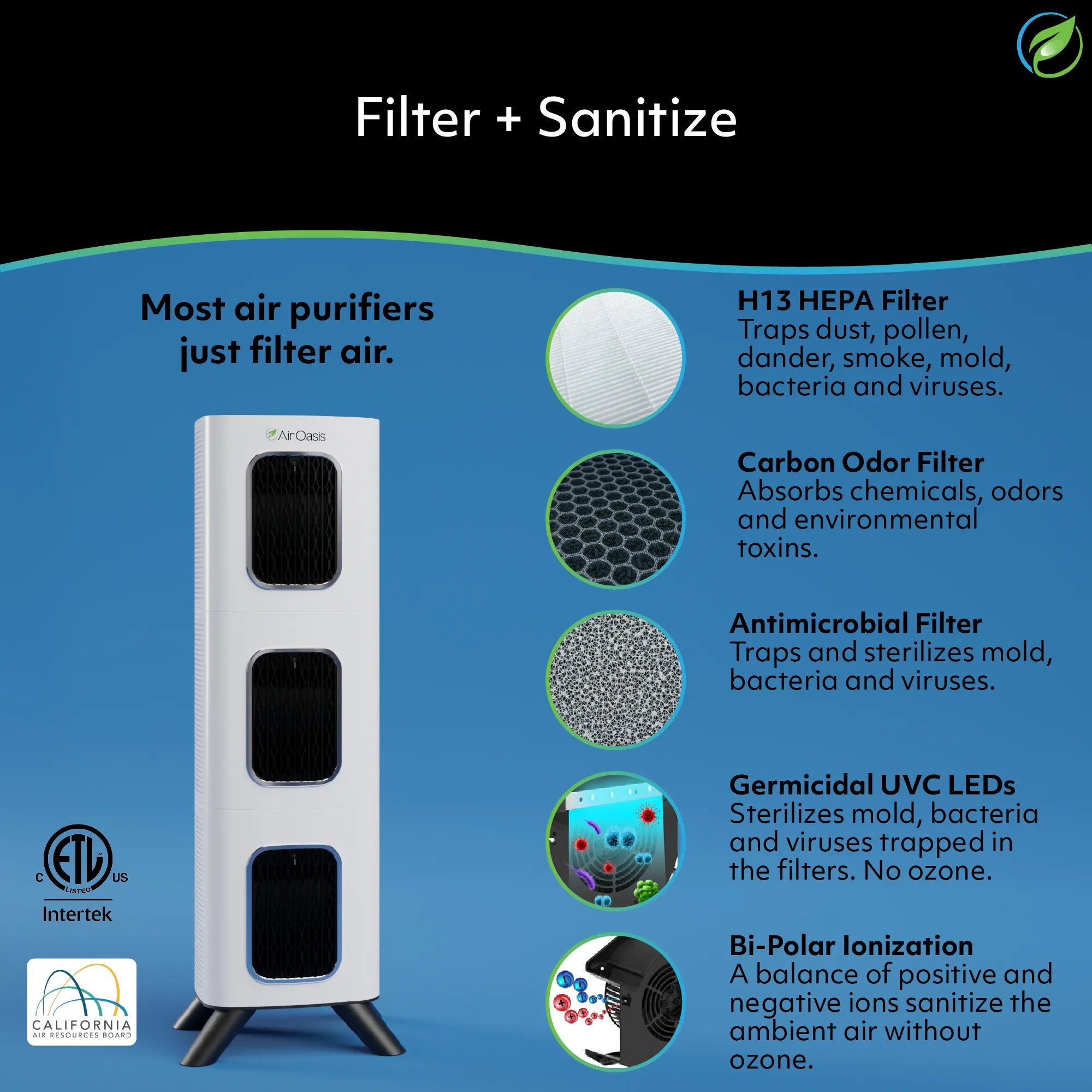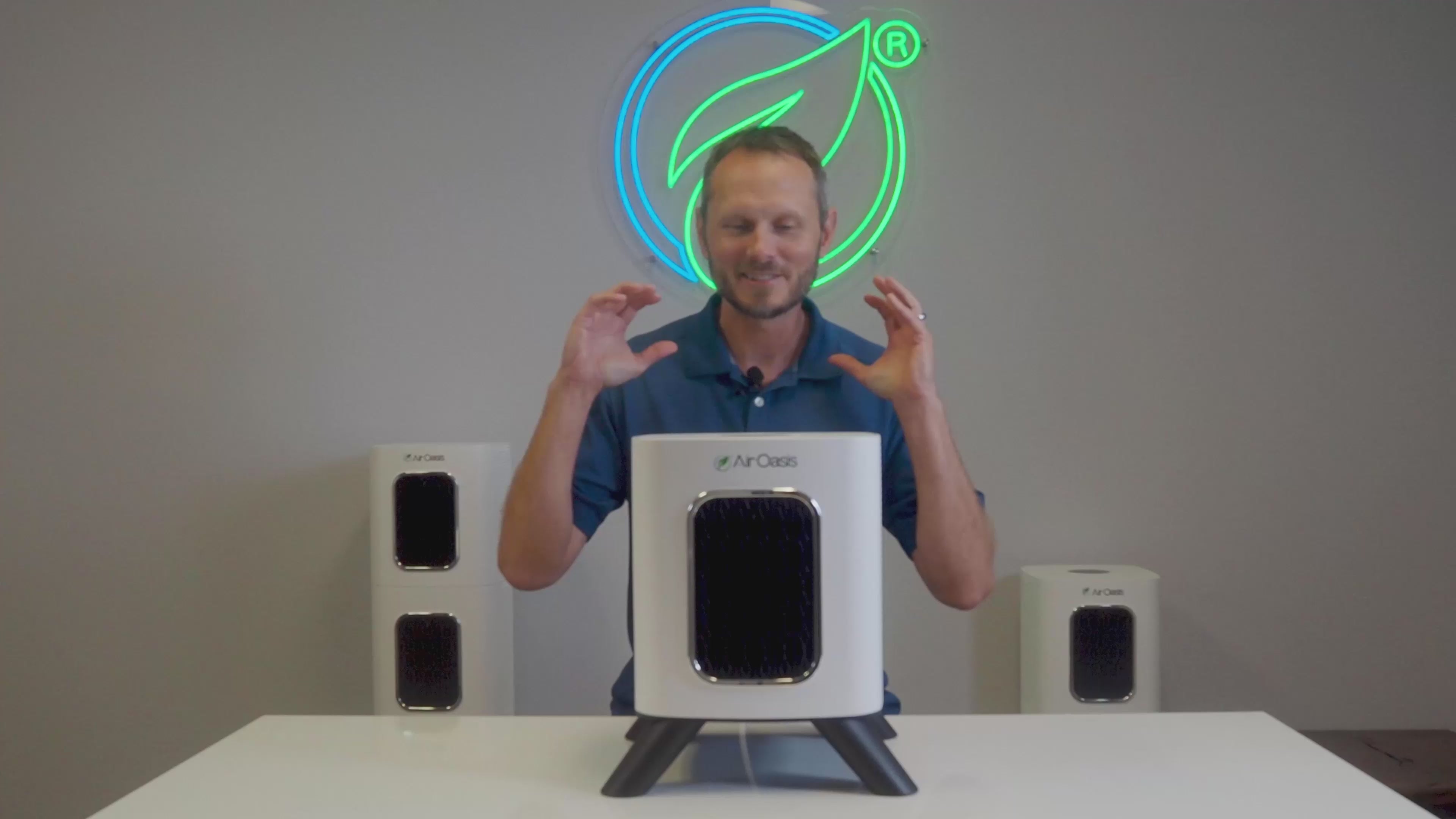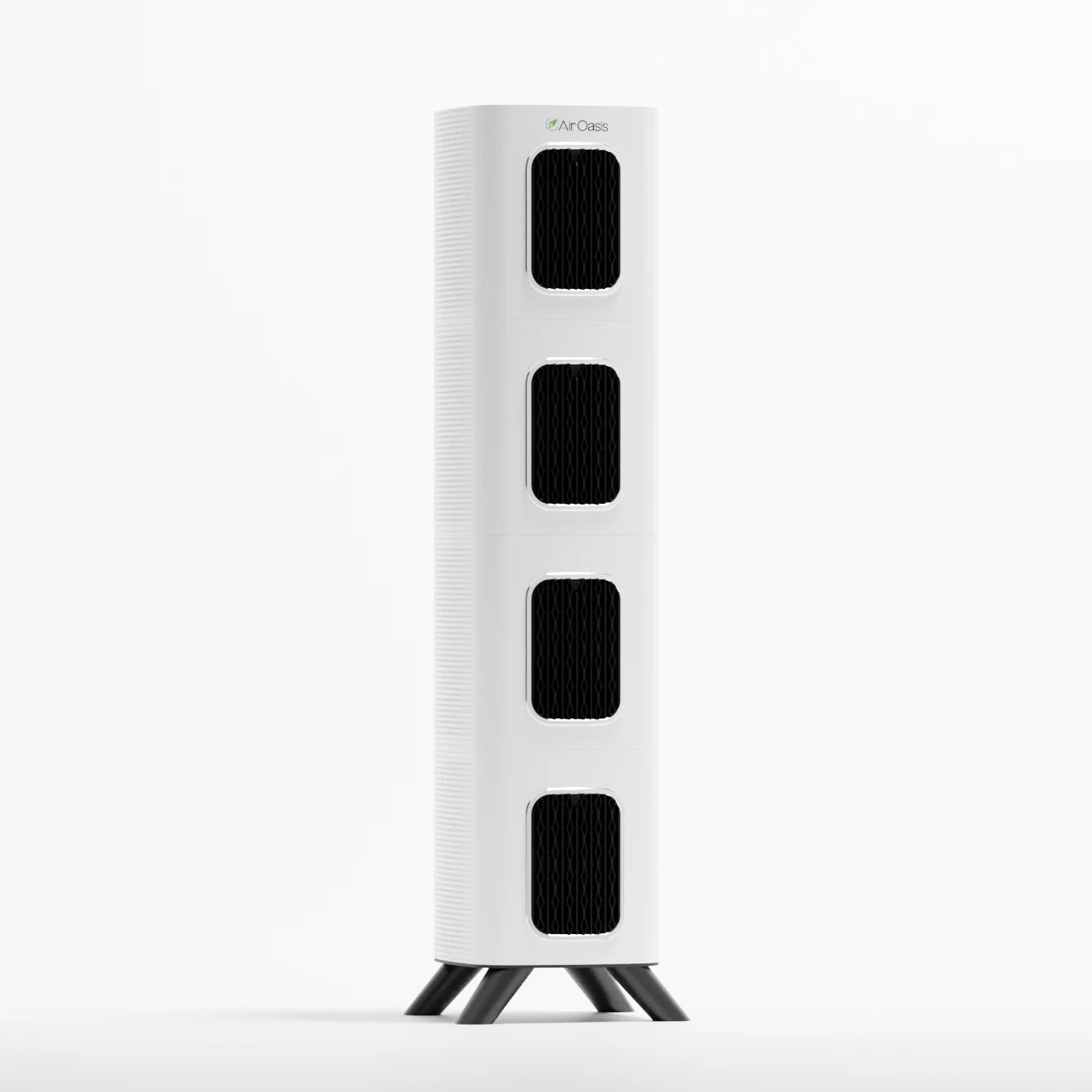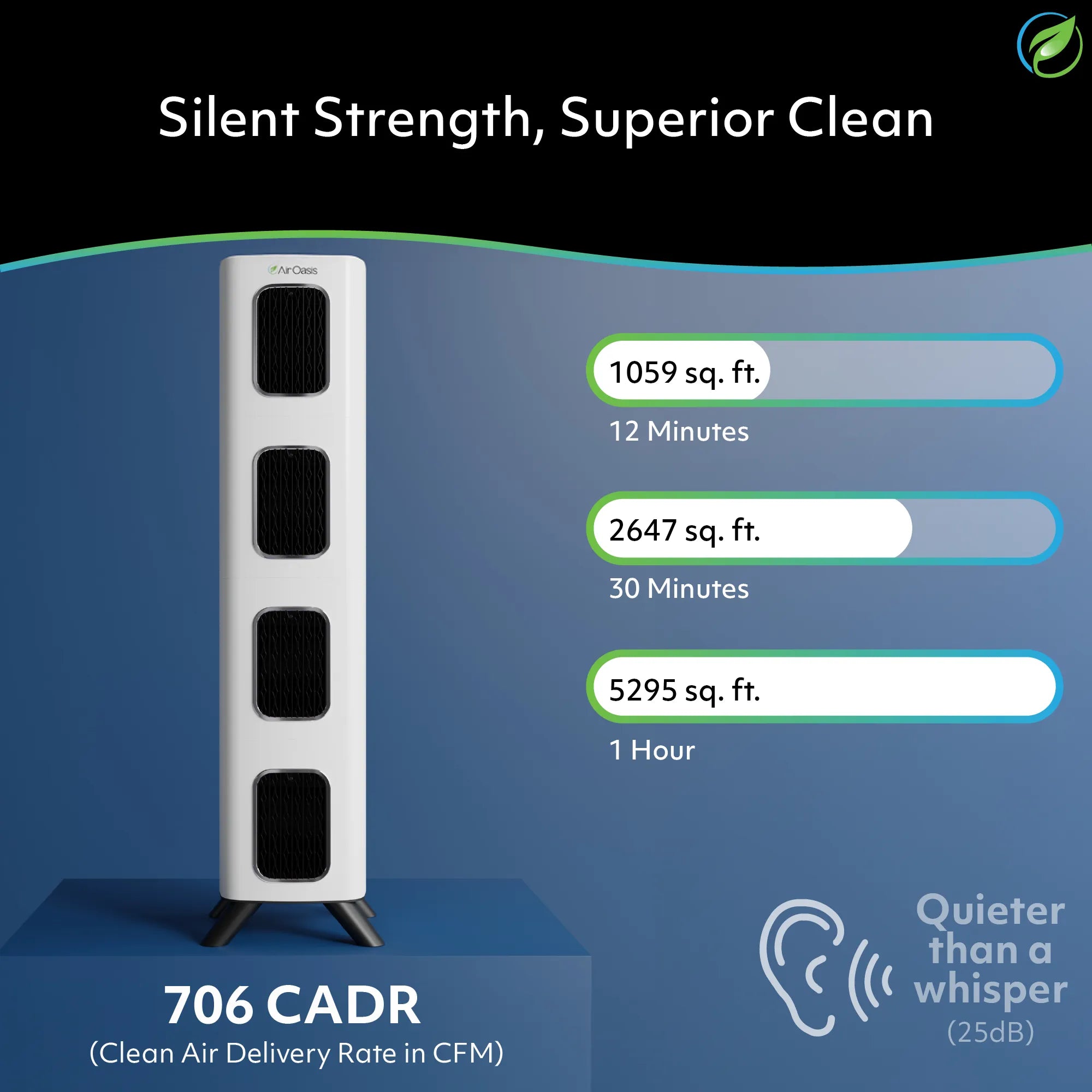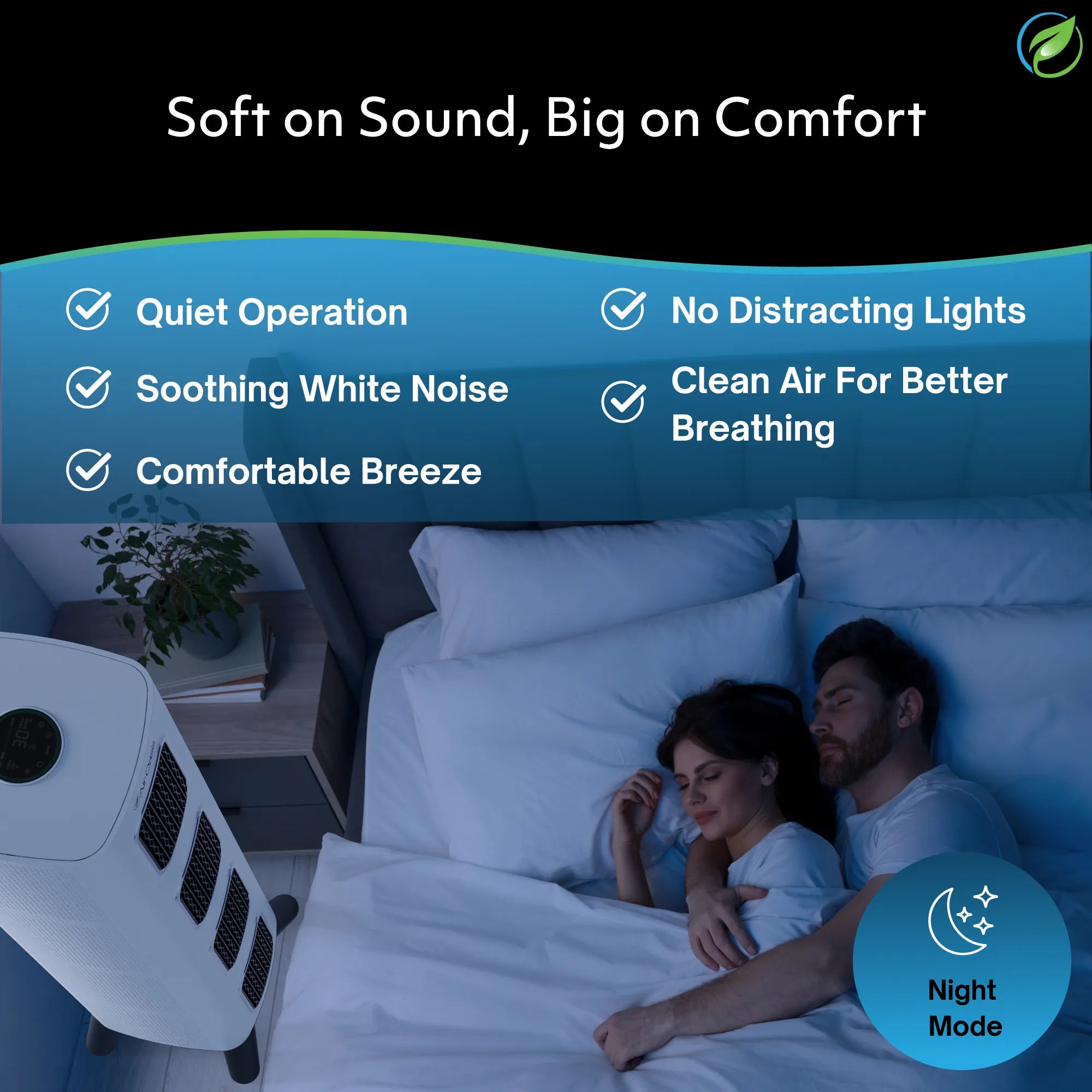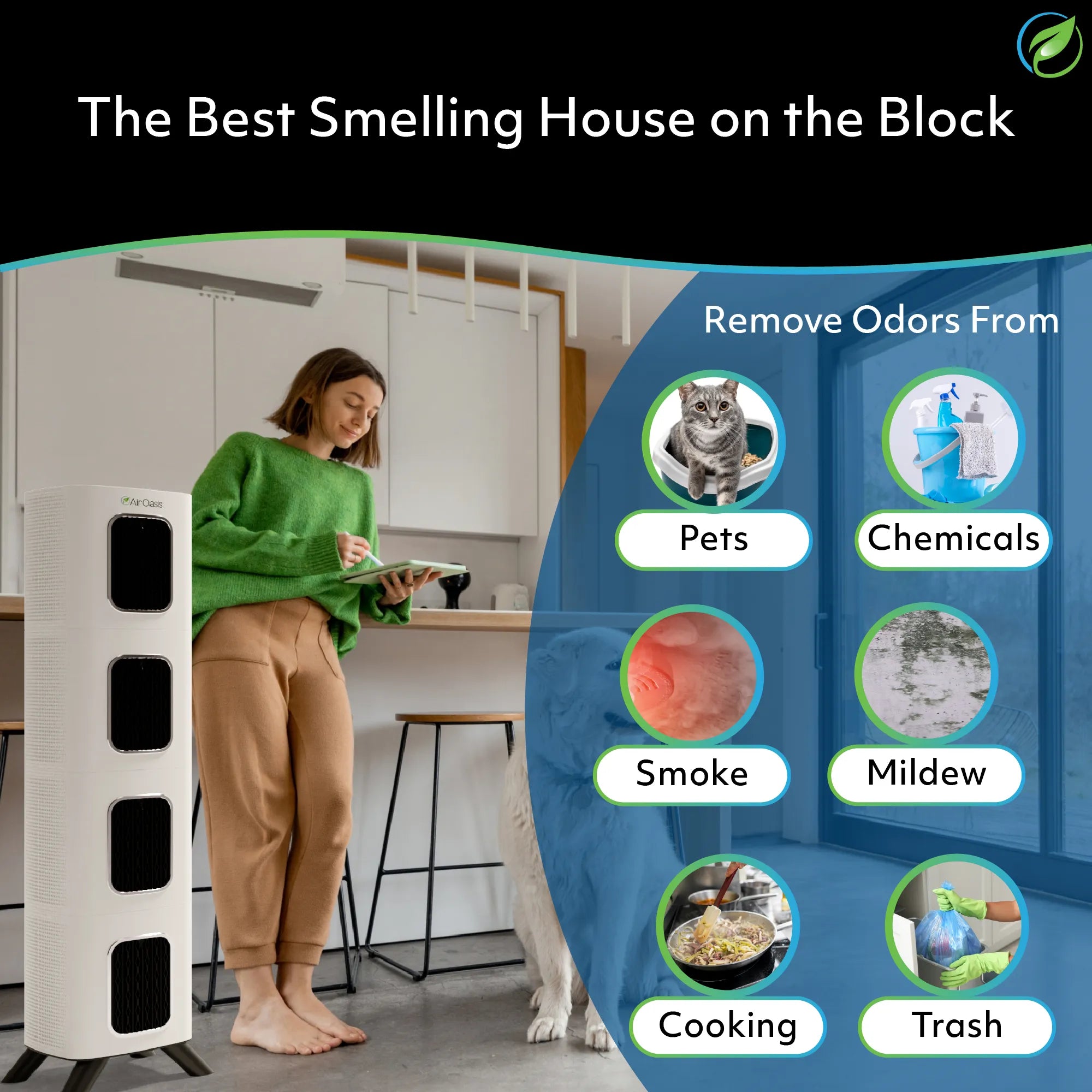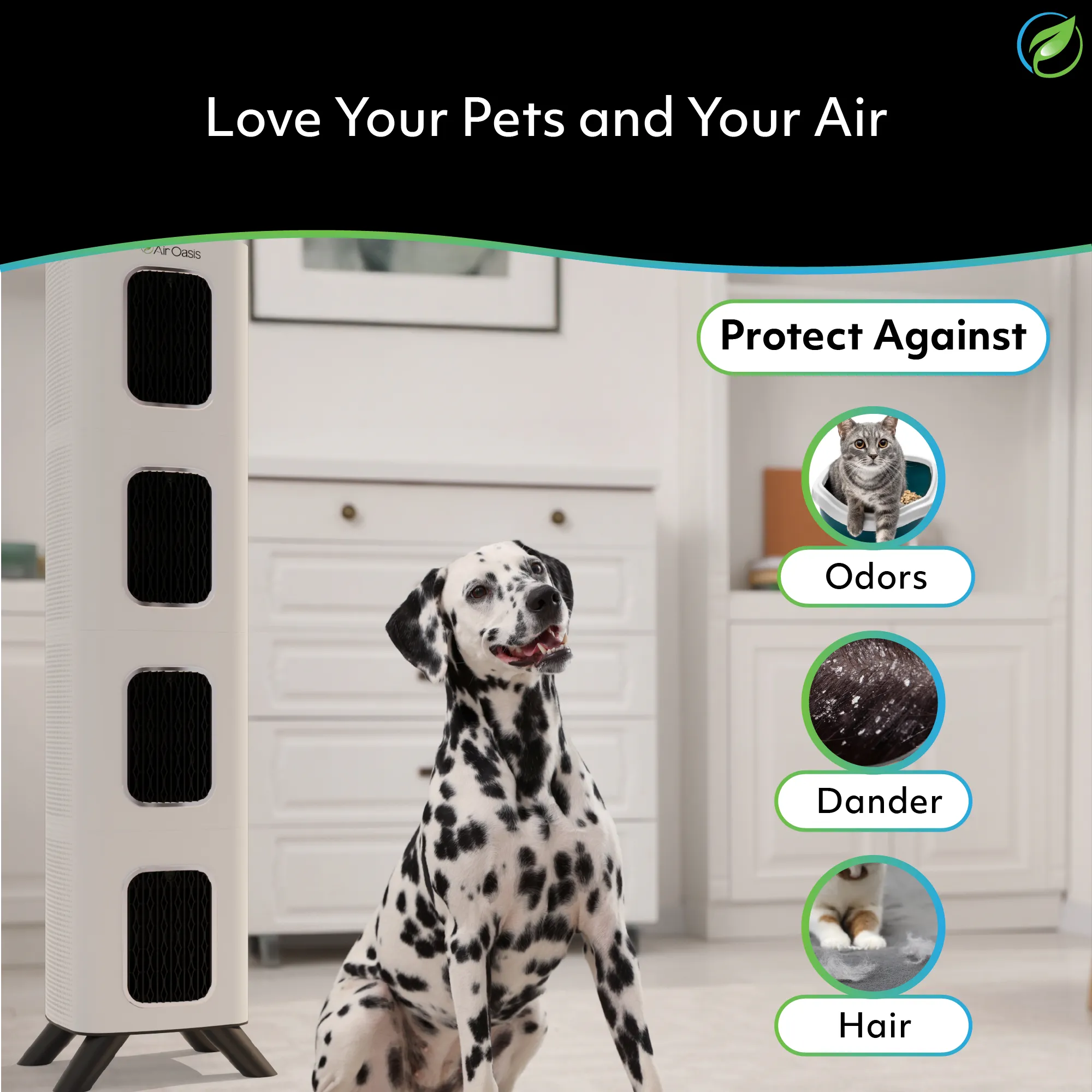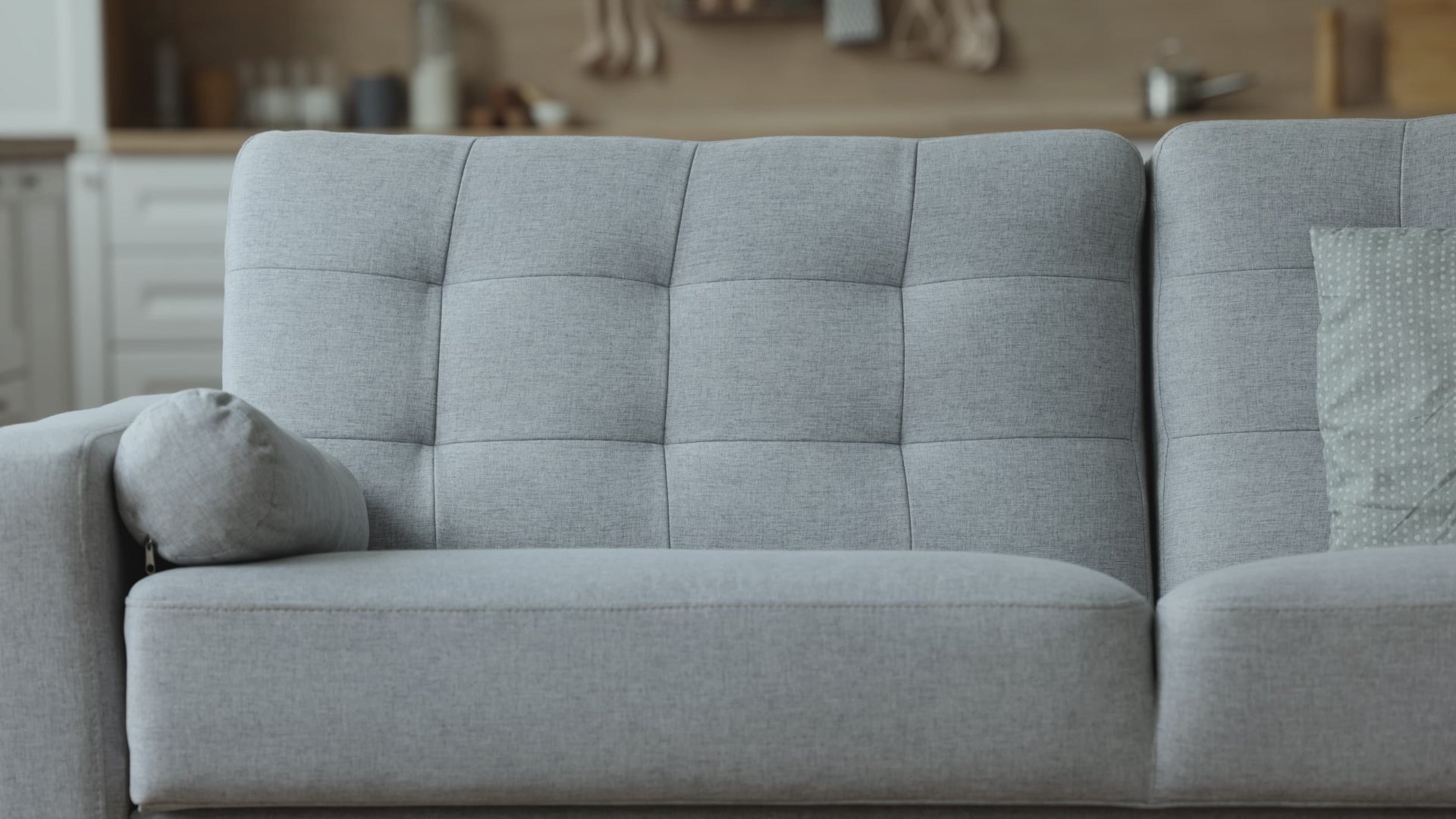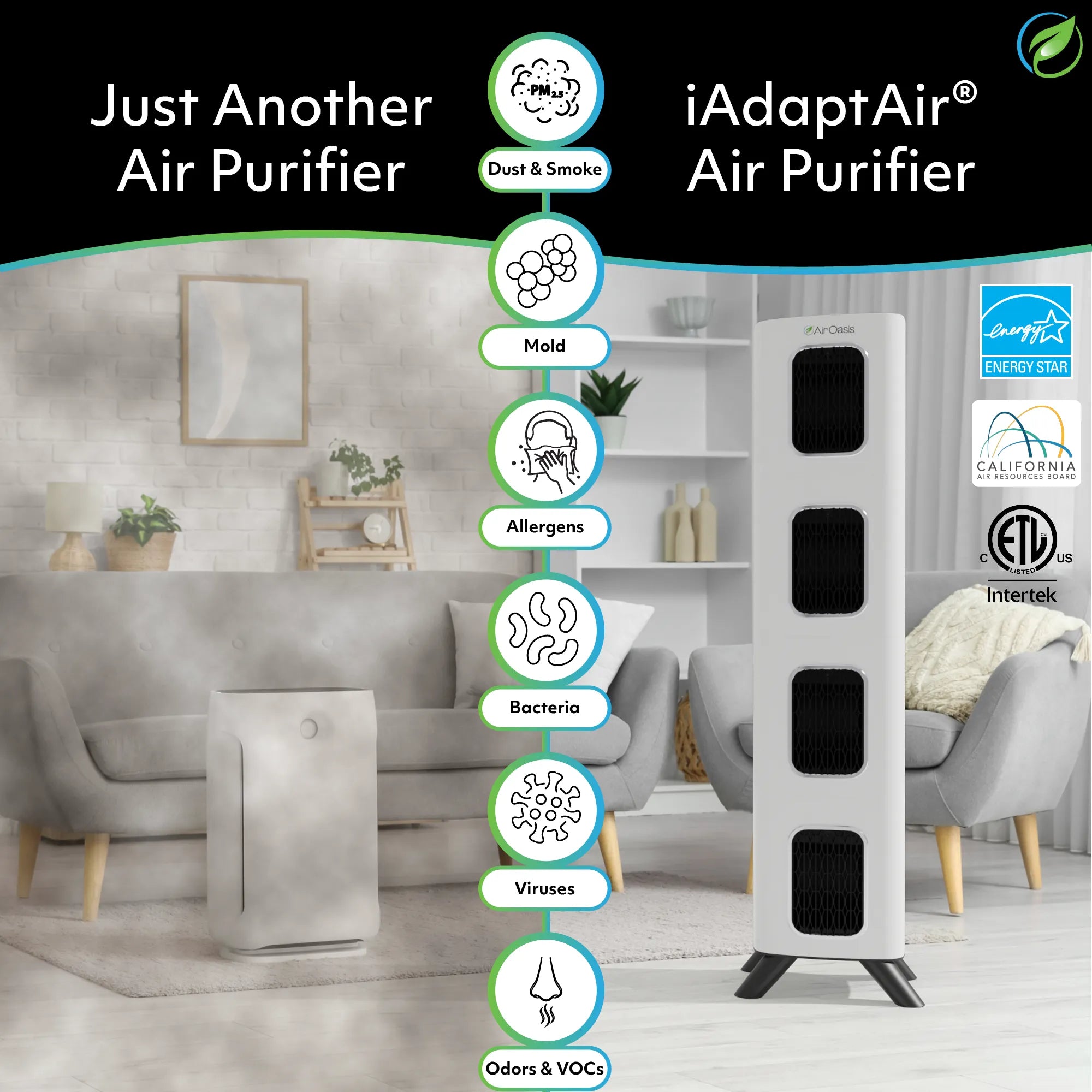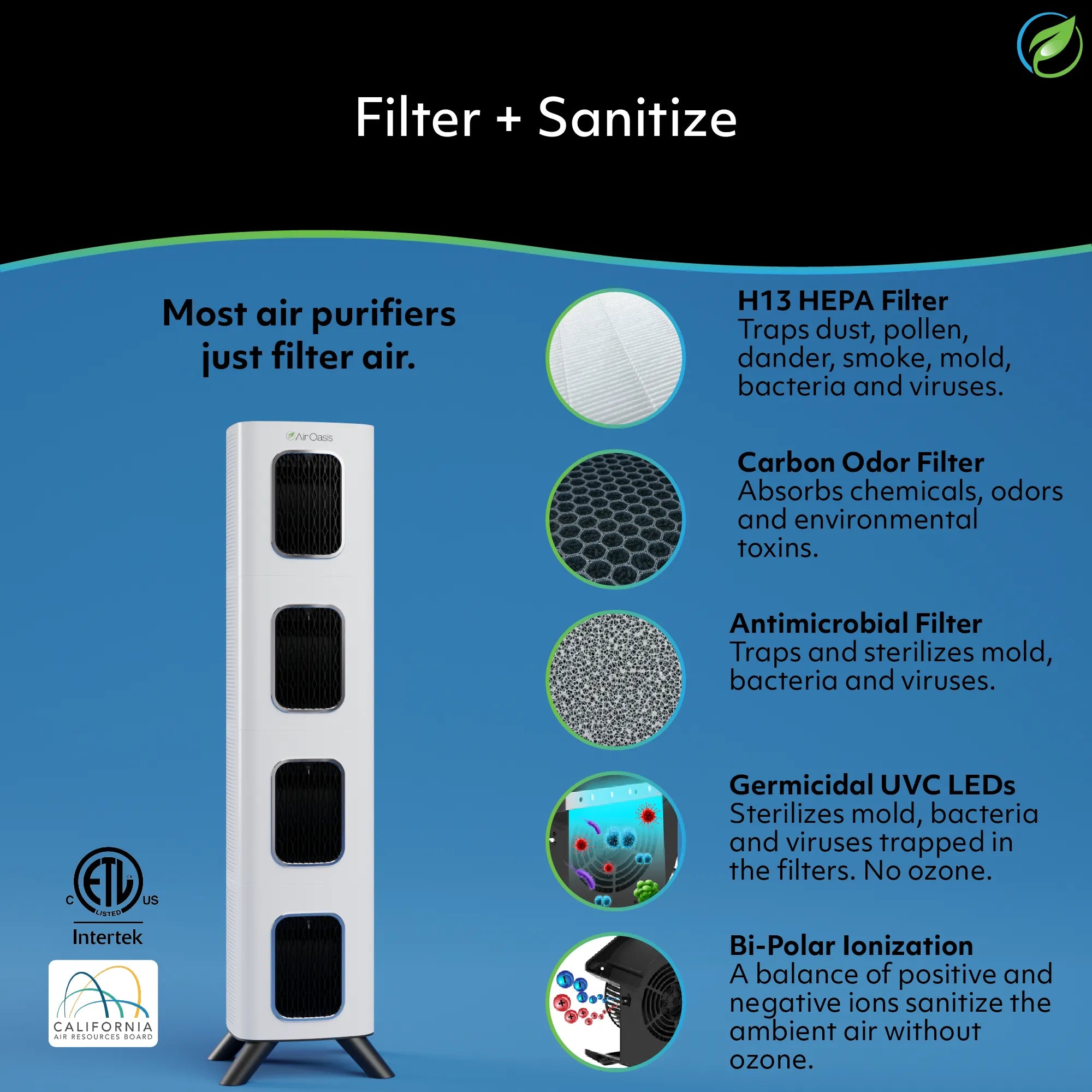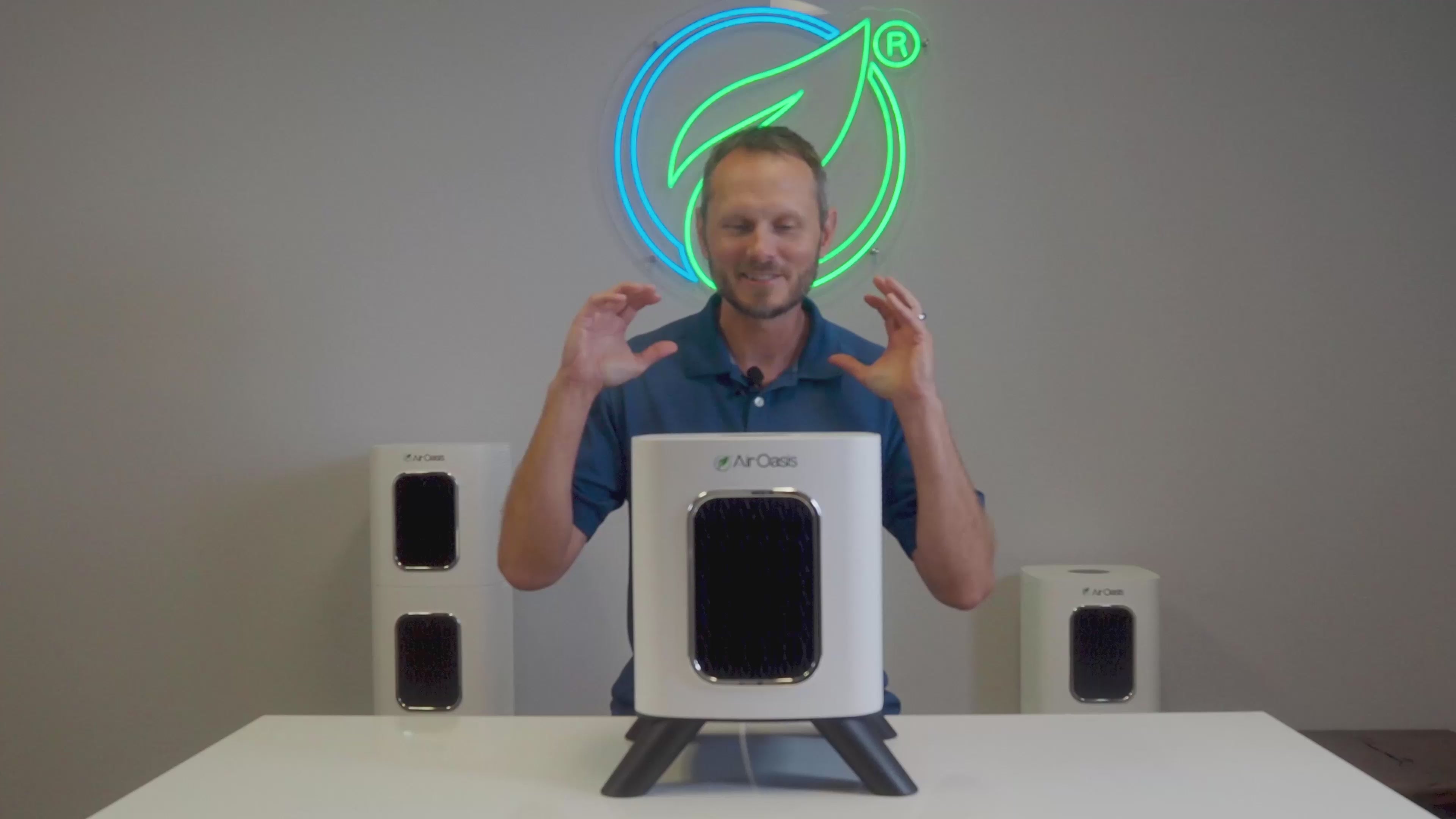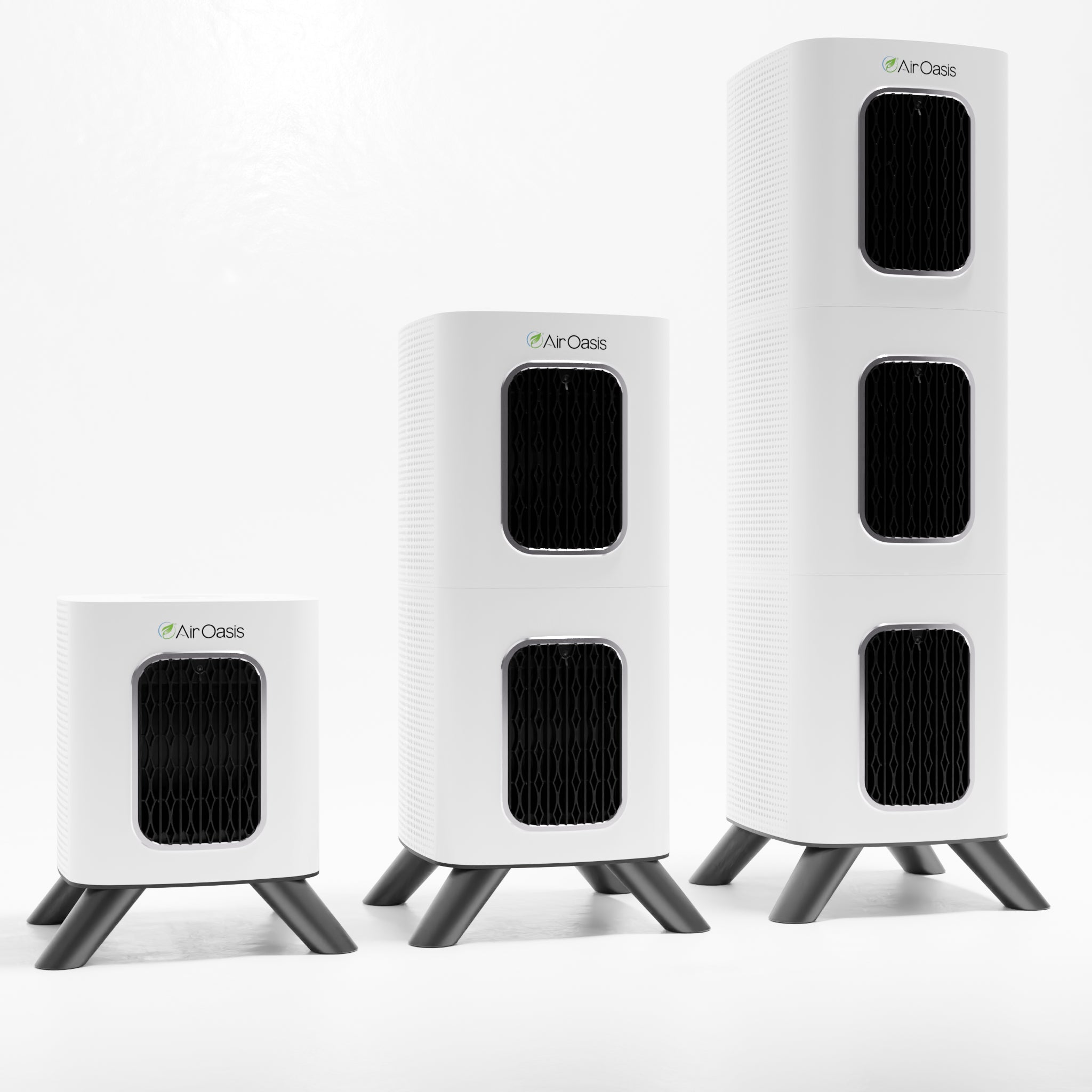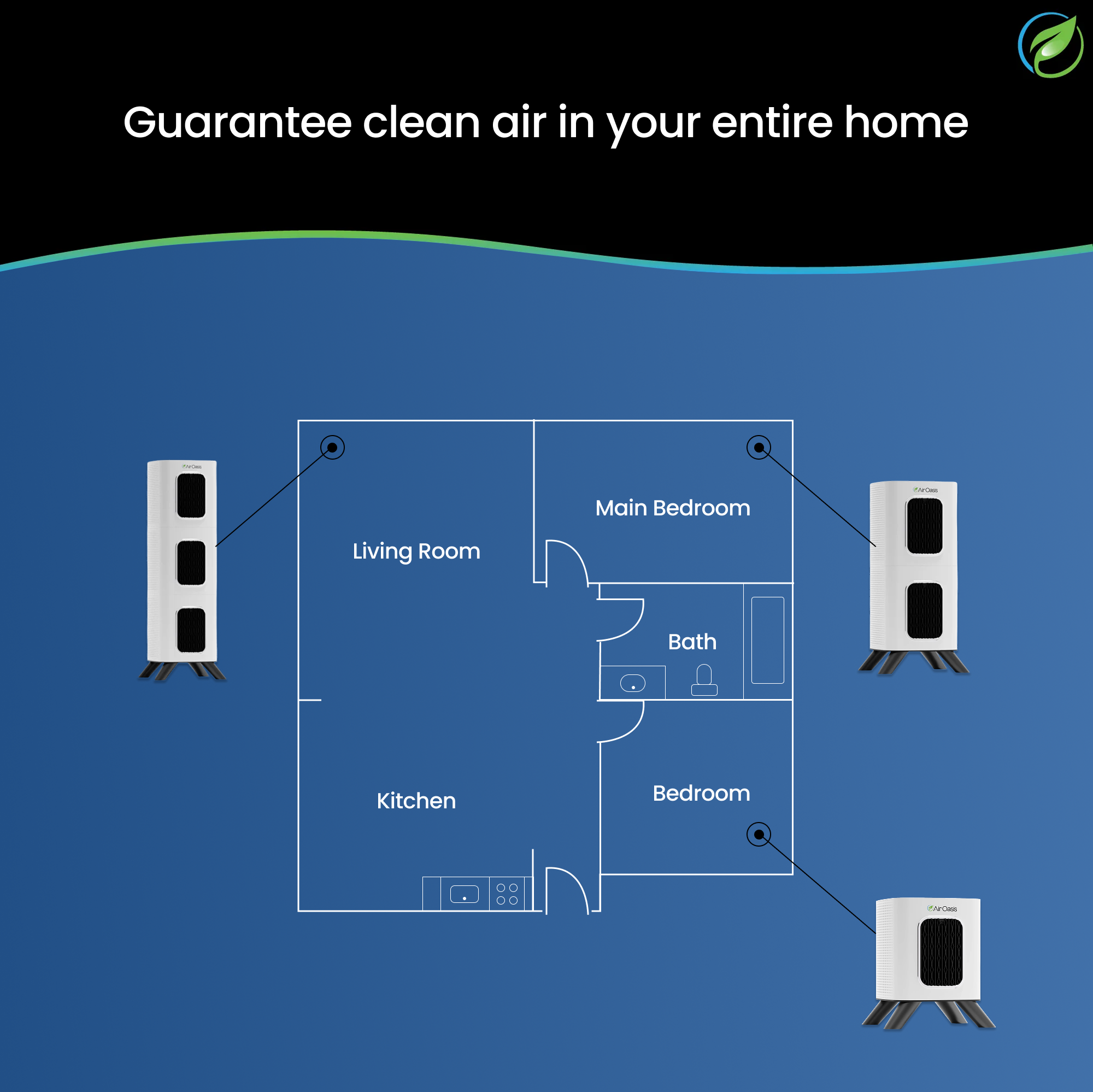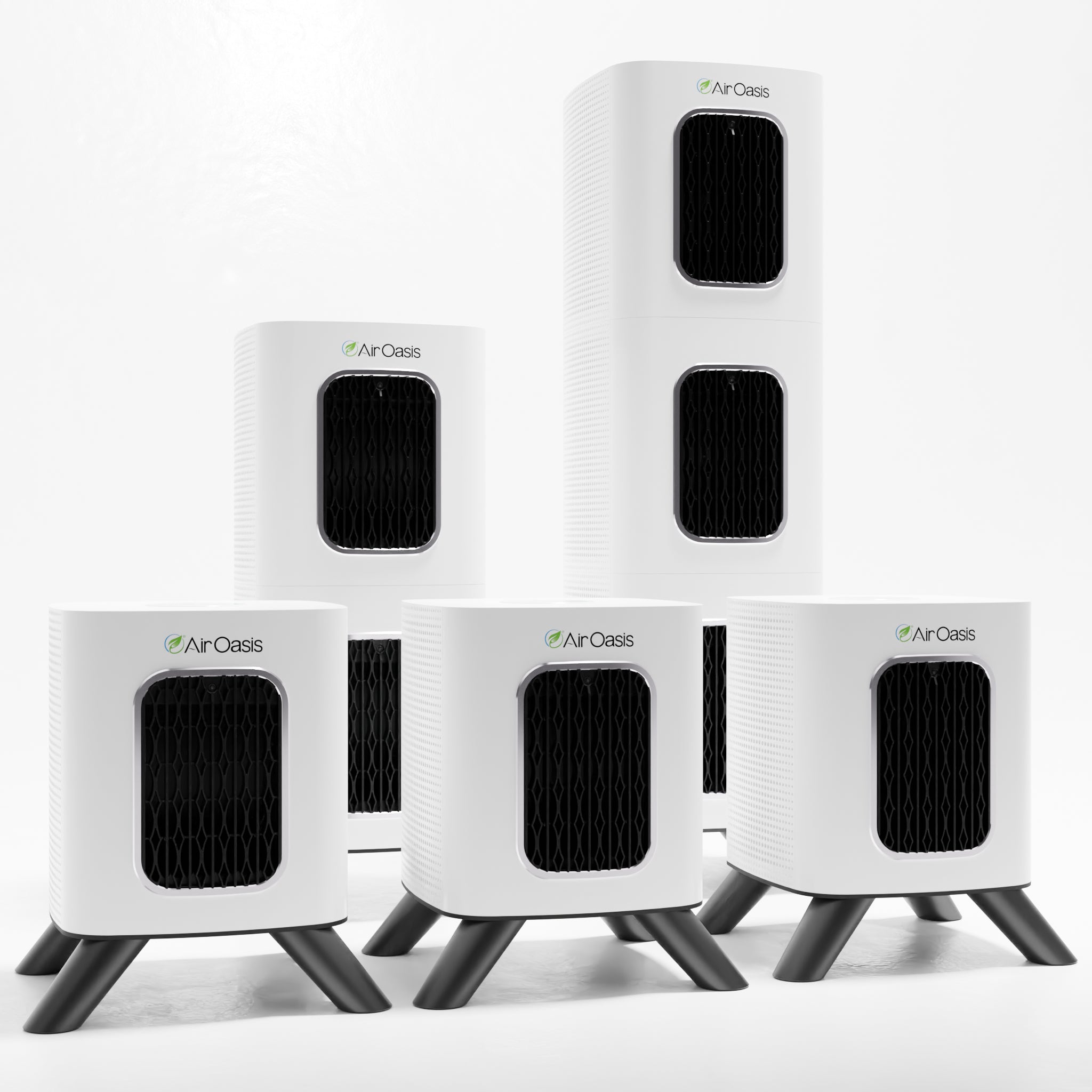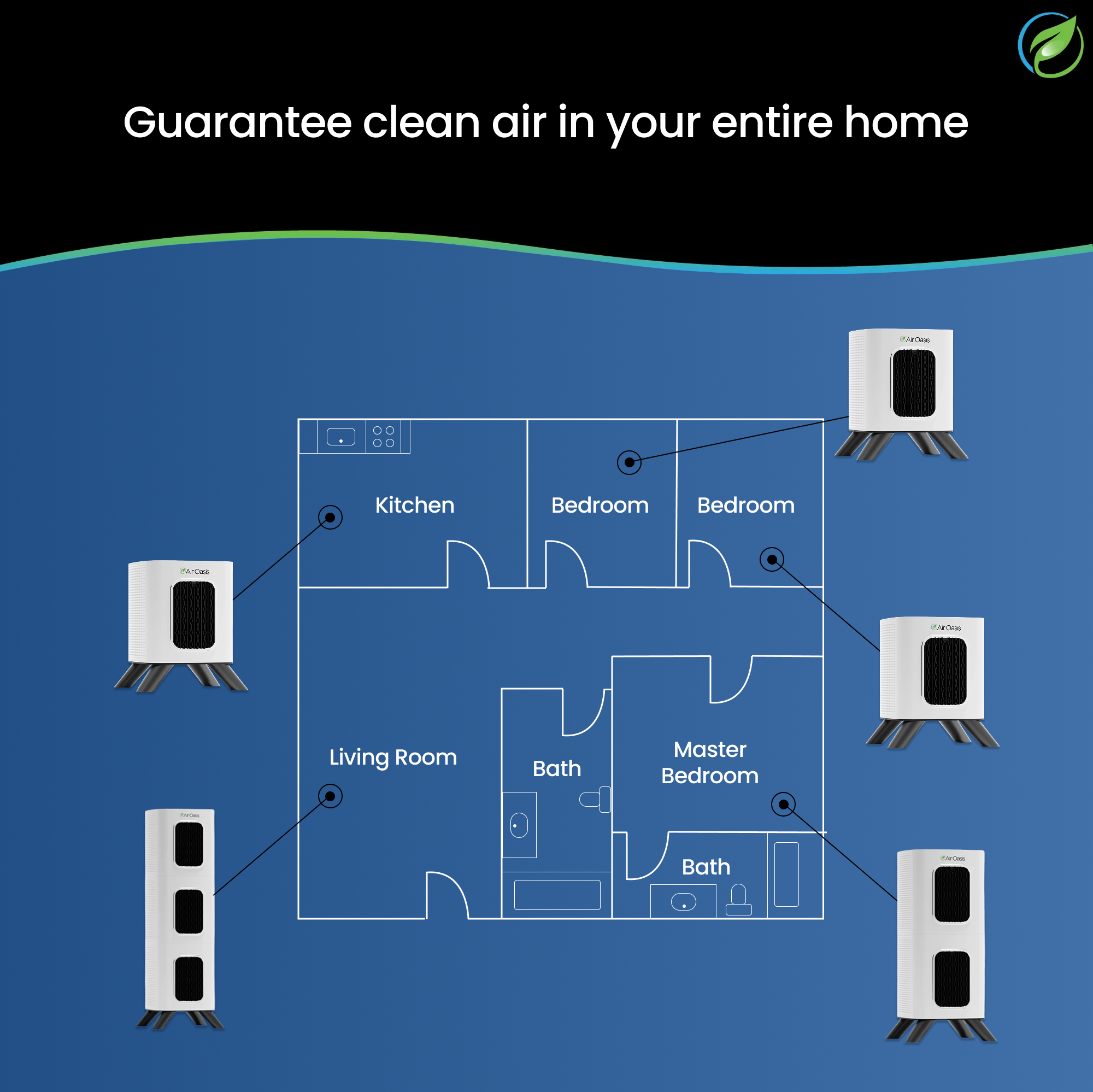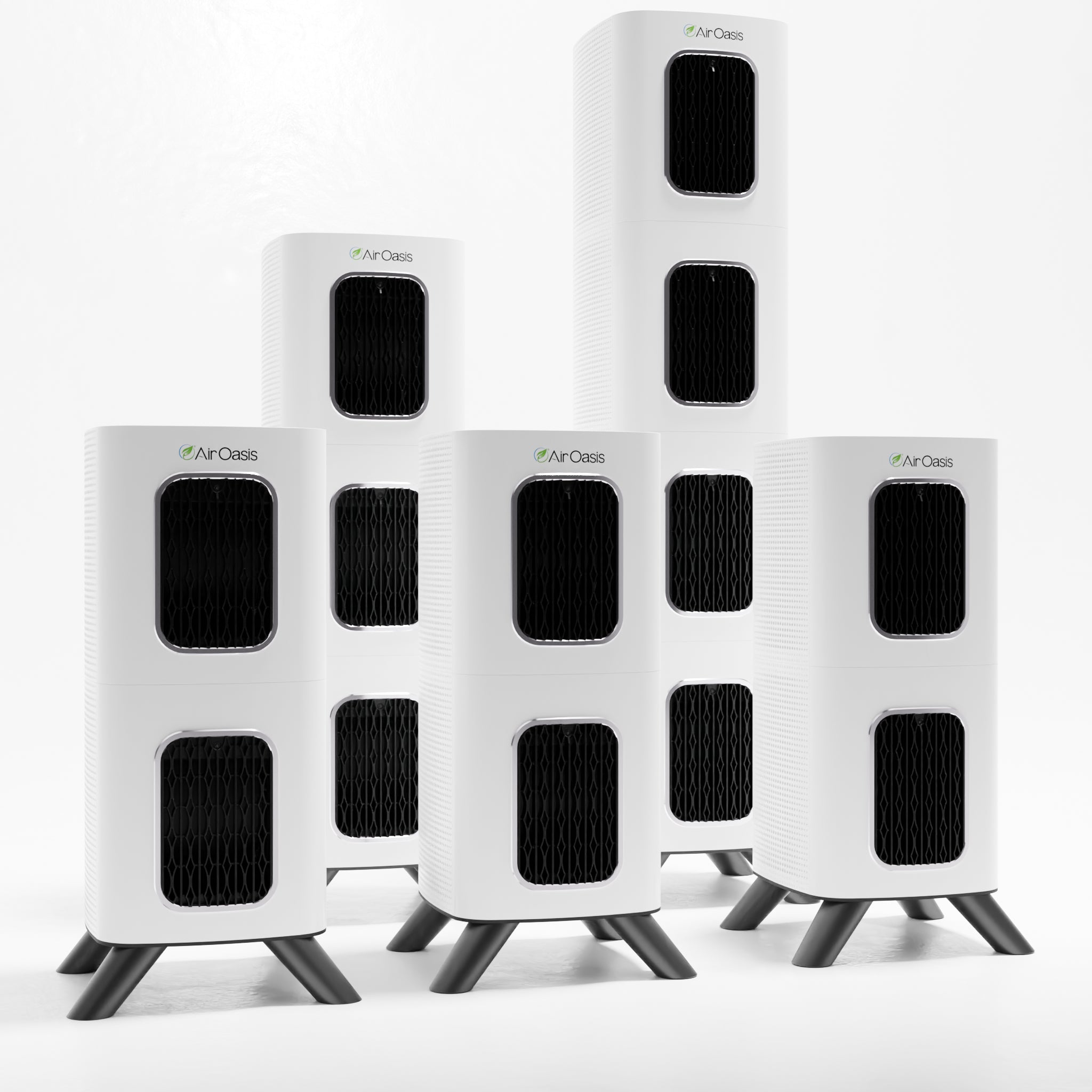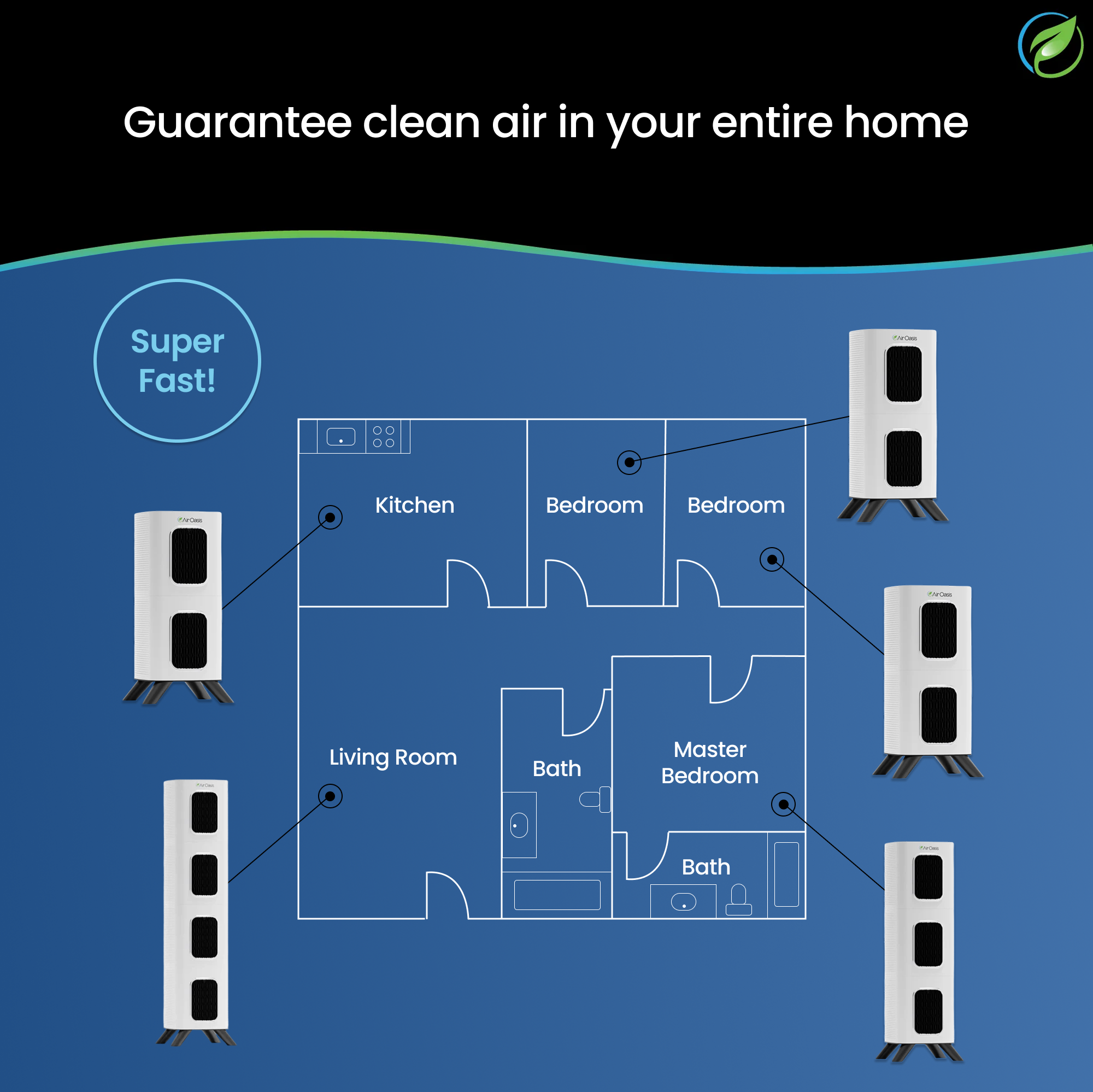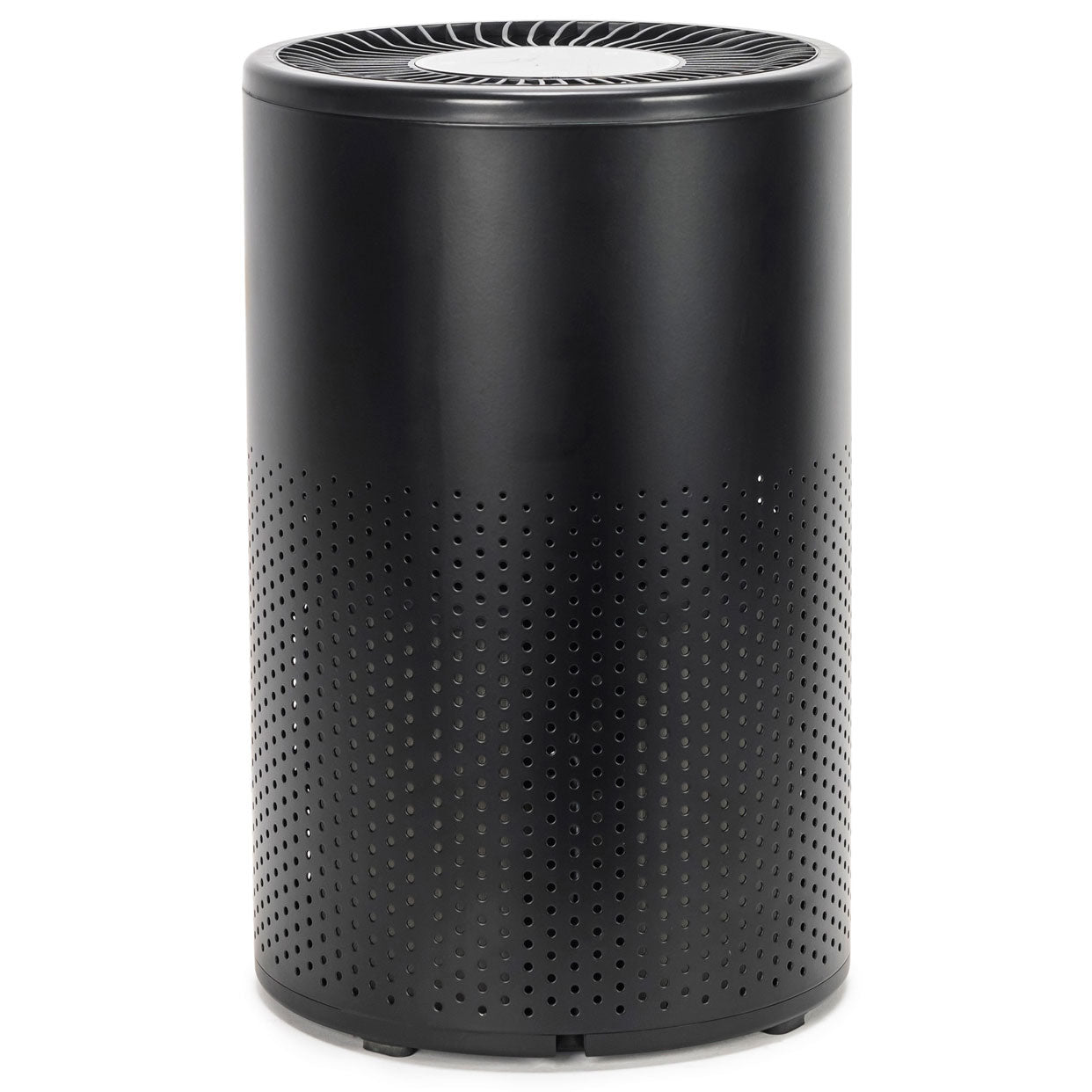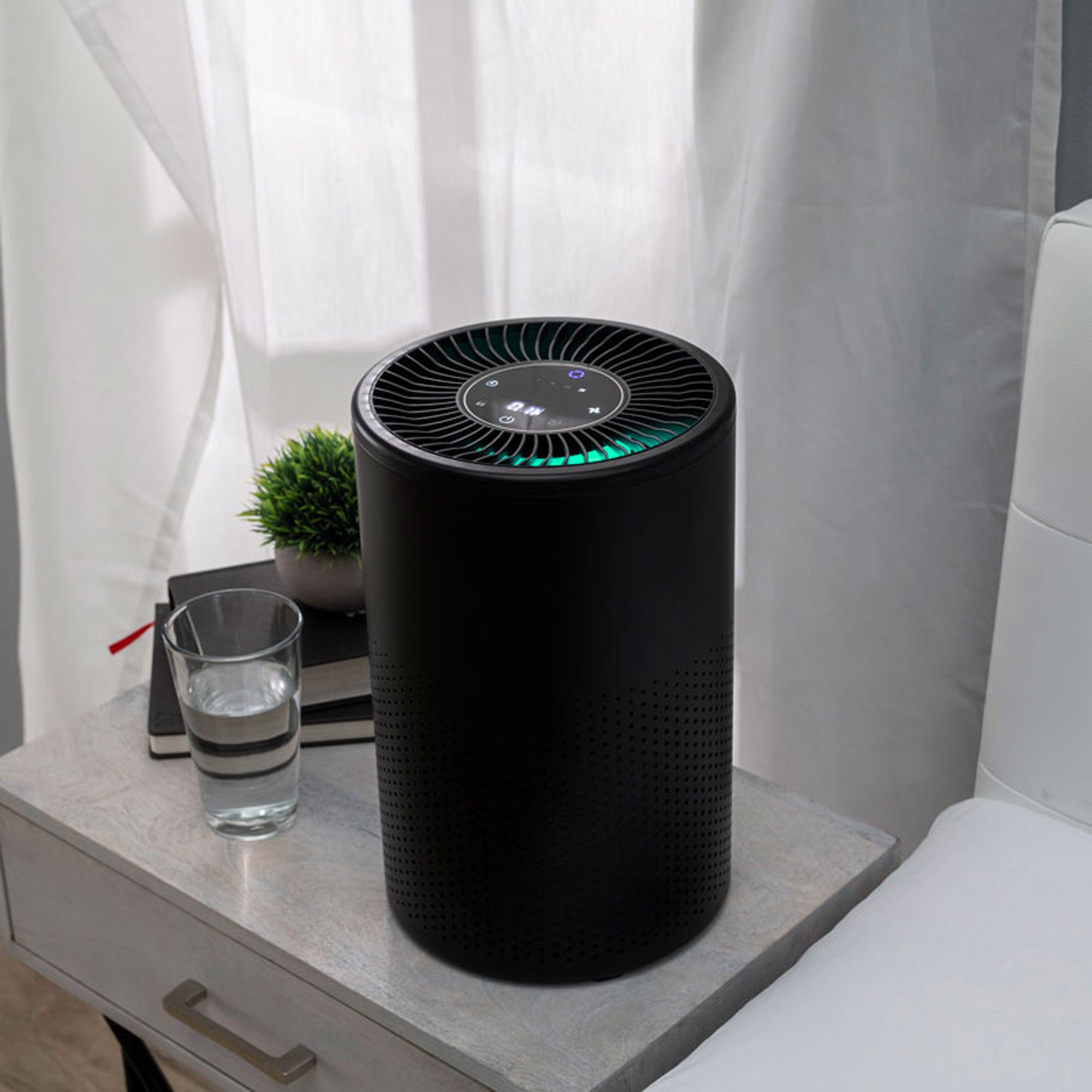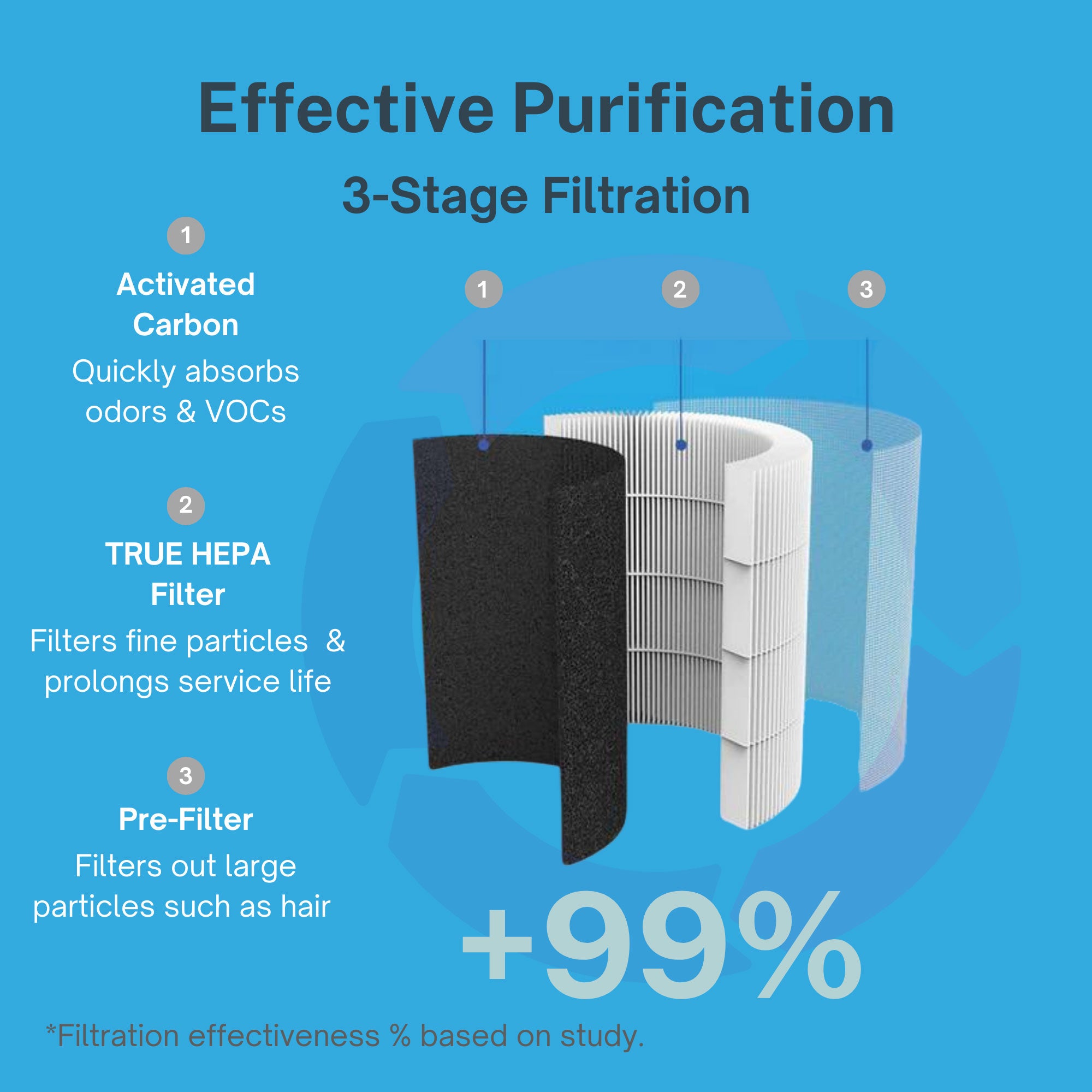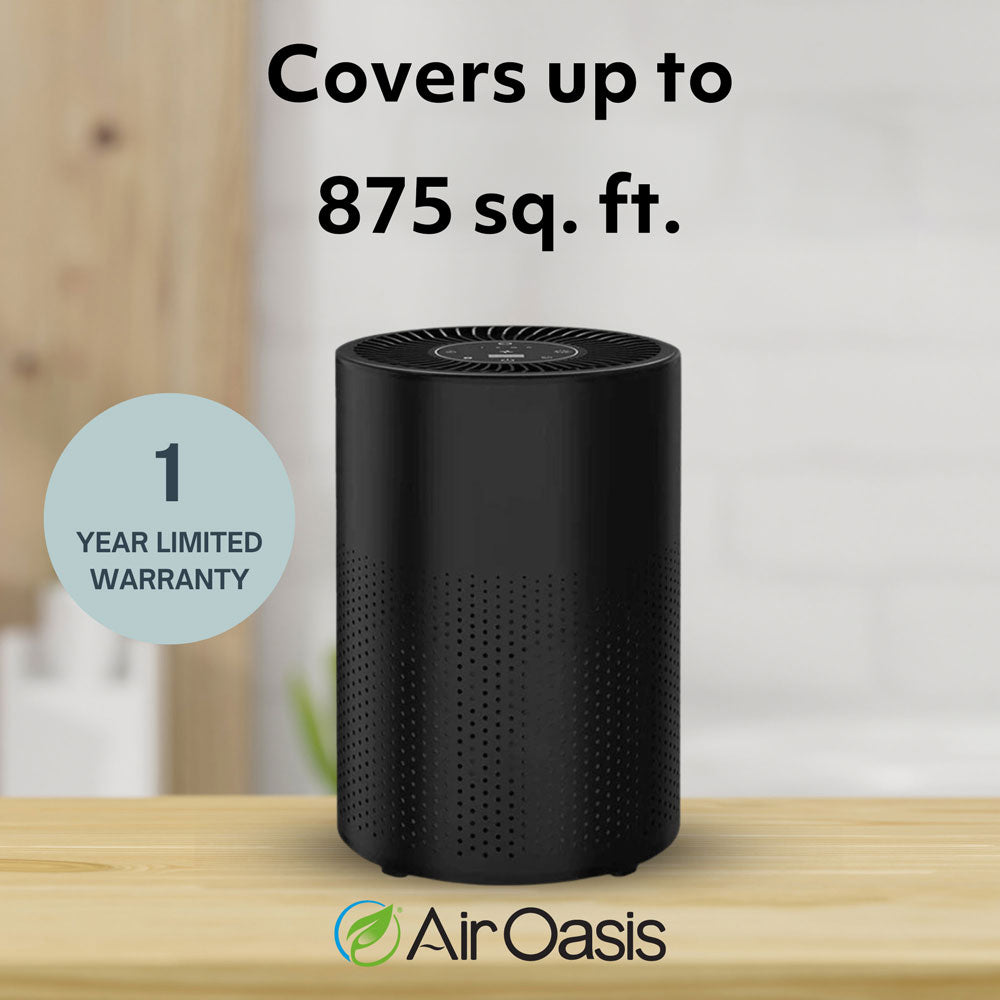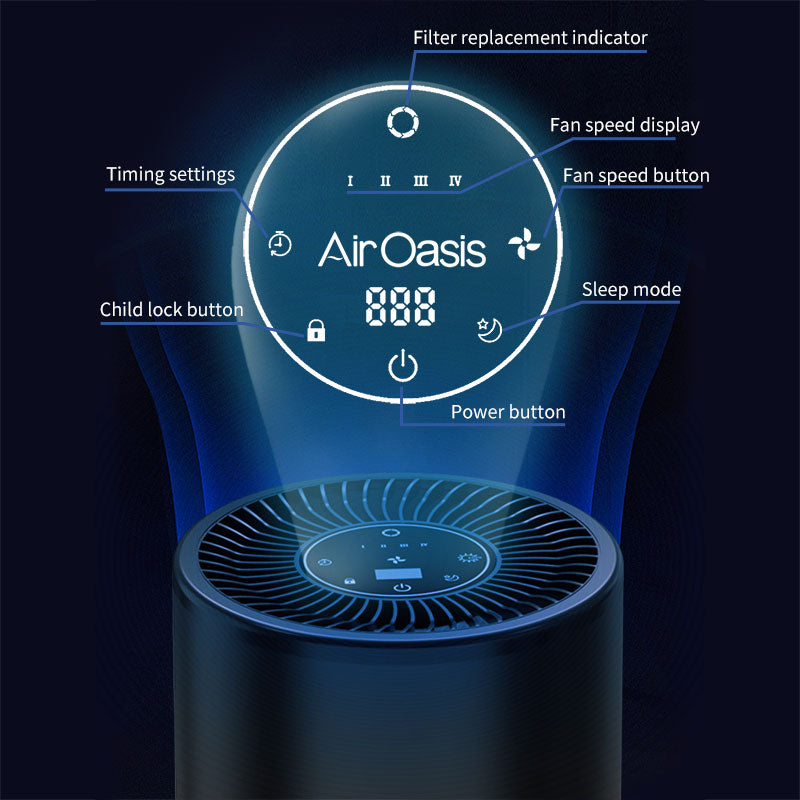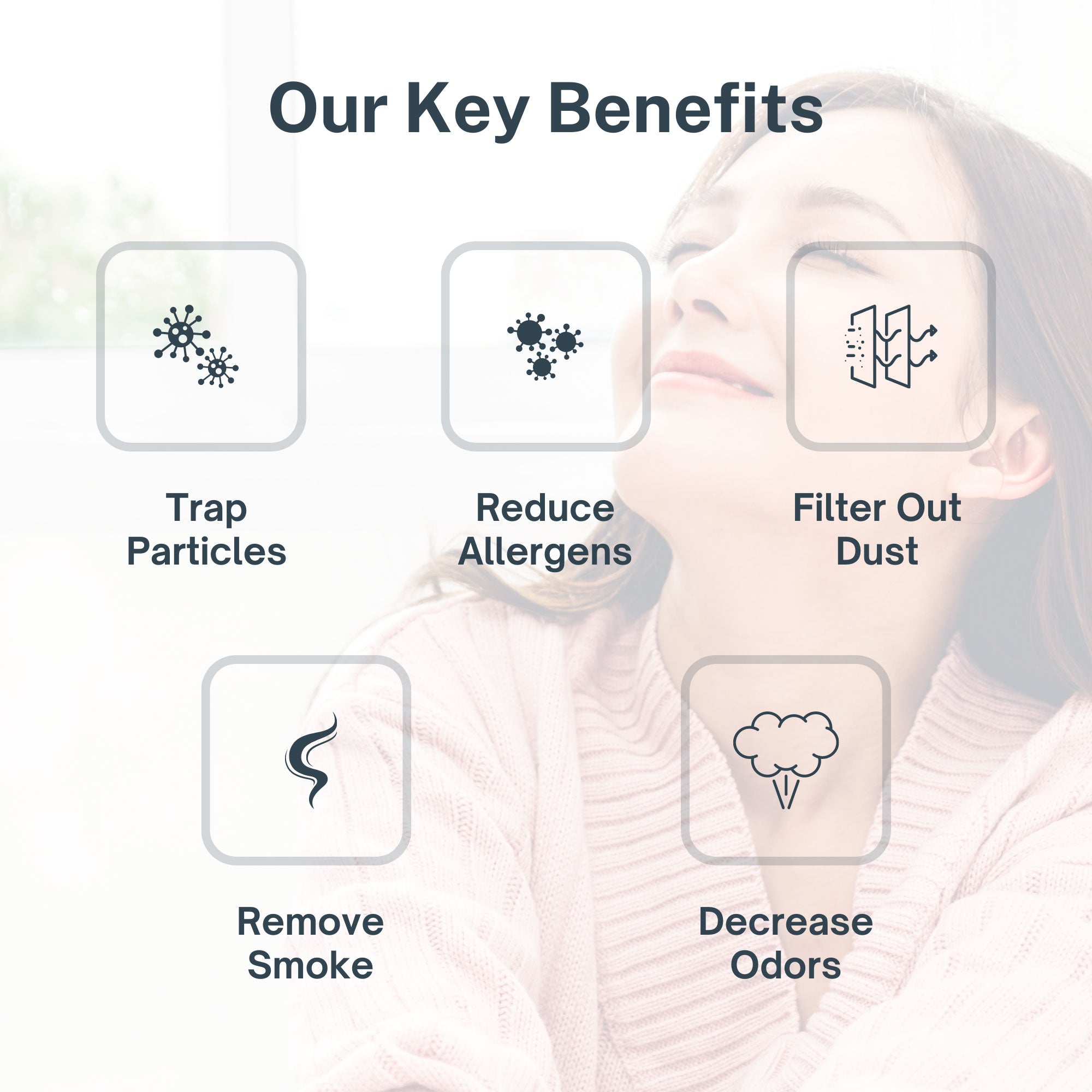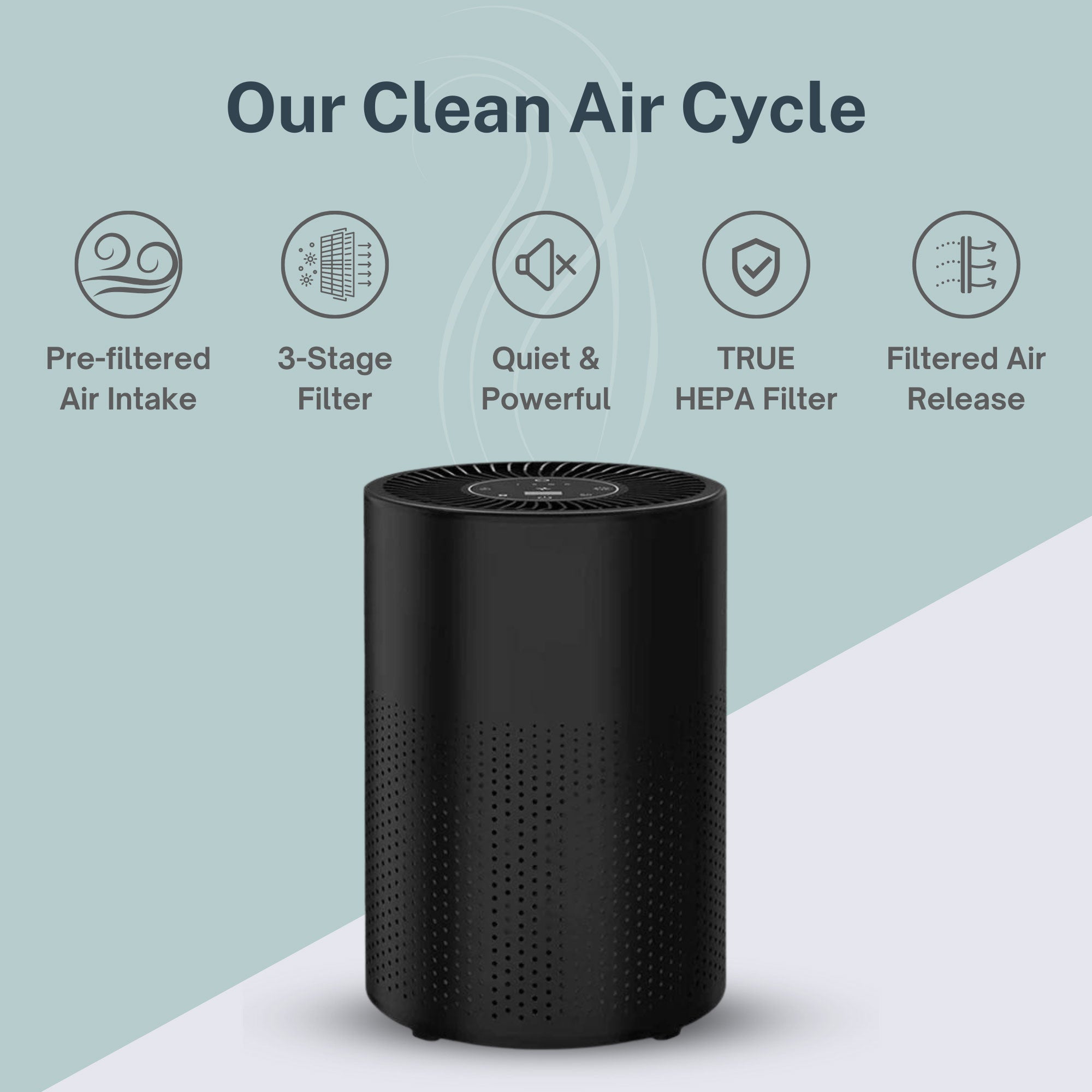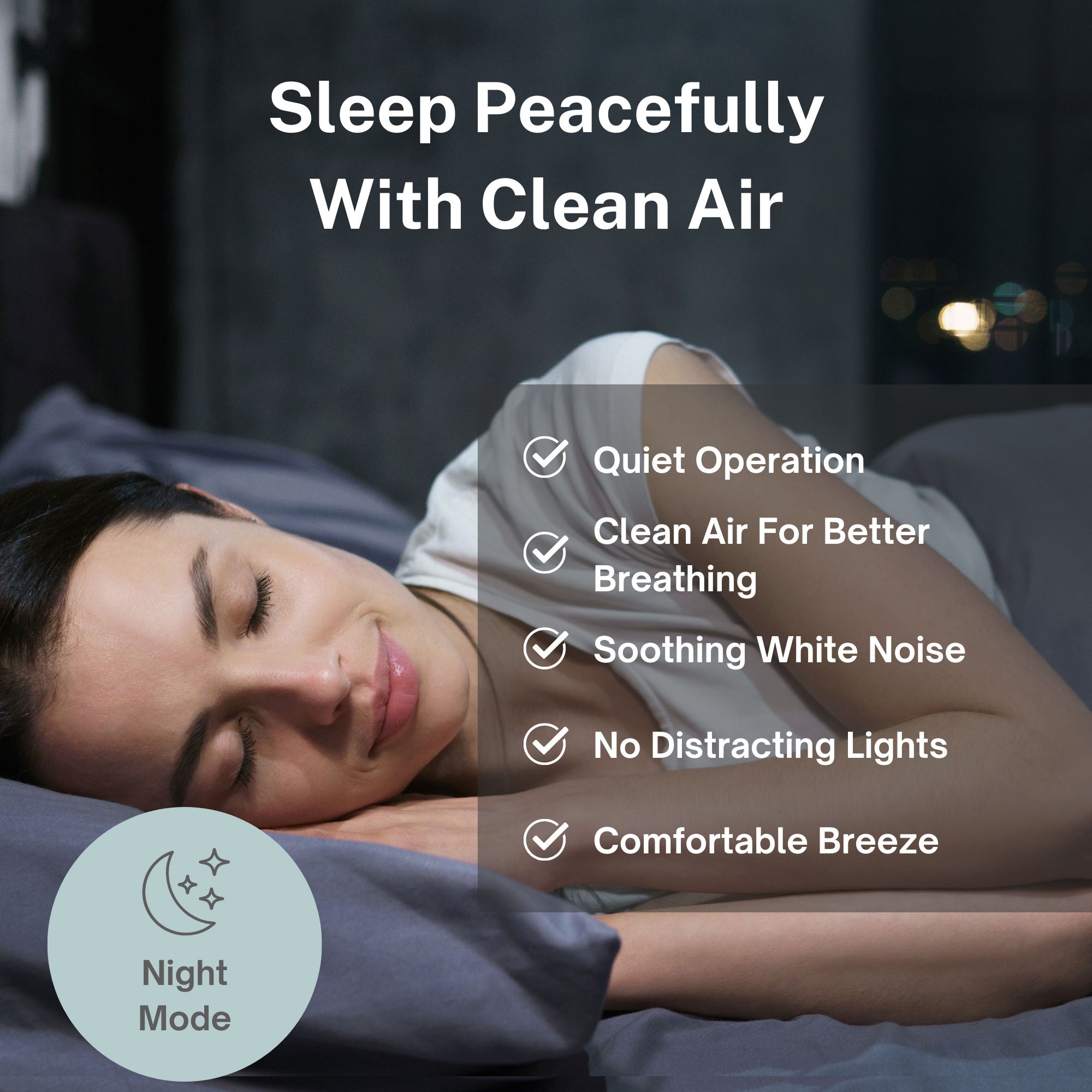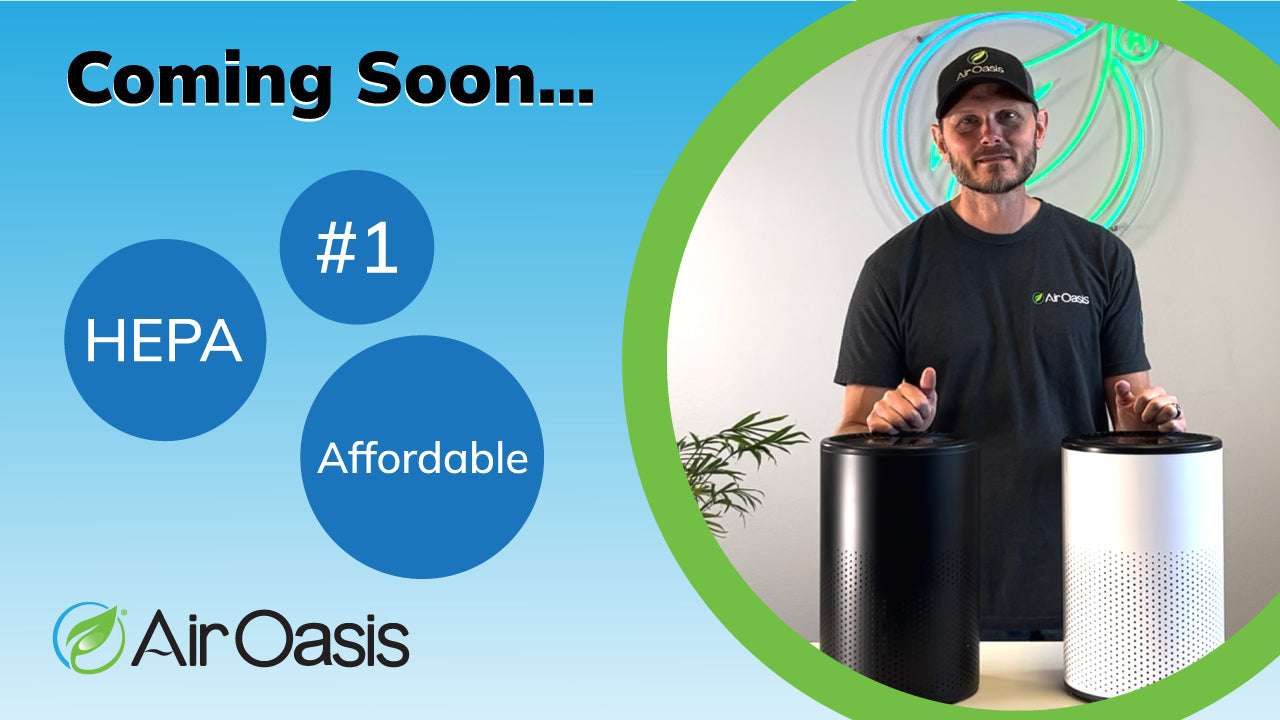Everyone, everywhere is looking for full-scale, long-term defenses against illness. With the lingering impacts of a global pandemic, we are all acutely aware of the risks of spreading sickness, and the responsibilities to protect our homes, schools and businesses. Chances are, most of us have a well-worn path to the Food and Drug Administration (FDA) website in our search history over the course of the last 18 months.
In addition to medicine and drugs, the FDA clears devices. One device that has recently been cleared is an air purifier. From news stories to research-backed studies to this approval, it’s clear that buying the best air purifier is a high priority for business owners and families who take their health seriously.
Read on for more information about what it means for an air purifier to be FDA cleared, and the technology you should look for when you go to buy an air purifier.
Latest News: FDA and Air Purifiers
In January, the FDA cleared an air purifier that effectively eliminated 99.9% of COVID-19 from the air. In an independent test, performed by a not-for-profit contract research organization, researchers infected a space with live, aerosolized COVID-19 virus. Using a multi-approach air purifier, they were able to reduce the aerosol particles from over 2 million particles per liter down to zero within 15 minutes.
FDA Cleared Technology
As the government agency tasked with regulating products for public safety, the FDA must evaluate a variety of consumer goods before they go to market. The FDA considers the air purifiers it evaluates to be medical devices, a category that is divided into three classes:
- Class I medical devices pose minimal risk to the user and include products like bandages, face masks and tongue depressors. Most of these are exempt from going through a premarket process with the FDA.
- Class II medical devices pose a medium risk and include products ranging from motorized wheelchairs to the Apple Watch Electrocardiogram (ECG) app.
- Class III medical devices pose the most risk to the patient. These devices are implanted in the body, and include pacemakers, breast implants and replacement heart valves.
The FDA categorizes air purifiers as Class II medical devices. Whereas Class III medical devices require FDA premarket approval, Class II medical devices only require clearance. Here’s the difference between those two classifications:
- FDA clearance requires medical electrical safety testing and performance testing. A company must then submit a 510(k), also known as a premarket notification. This allows the FDA to evaluate whether the device is “substantially equivalent” to a legally marketed predicate. Once a device is cleared, it can be marketed and sold in the U.S., but it cannot be marketed as “FDA approved,” or display the FDA logo.
- FDA approval means that a manufacturer has provided valid scientific evidence demonstrating that the device is safe and effective for its intended use. To be approved, manufacturers must submit a premarket approval application (PMA), as well as the results of human clinical trials.
Air Purifier Technology
Air purifier technology is increasingly sophisticated. When you go to shop for an air purifier online, you’ll encounter numerous terms, all of which are associated with commonly used technologies for air purifiers. It’s important that you understand what type of air purifier you are buying.
At Air Oasis, we understand that our customers have a variety of needs, which is why we offer residential and commercial air purifiers based on concern, technology and setting. To find the best air purifier for you, here is an overview of the different methods of air purification.
Ionic Air Purification
Ionic air purifiers clean the air by emitting ions that deactivate contaminants like viruses, bacteria, mold, allergens and odors. Unlike HEPA filtration, which traps airborne particles, ionizers emit negative ions that blanket the air and neutralize the threat of particulates, VOCs and more.
These are the two most effective commercially available forms of ionic air purifier technologies:
Photocatalytic Oxidation (PCO)
This method uses ultraviolet light photons to shine on a catalyst, a reaction that creates decontaminating ions. However, these ions are short-lived, so basic PCO alone isn’t very effective.
An advanced PCO, like our Advanced Hydrated PCO (AHPCO®), uses specific catalysts to create long-lasting ions that travel farther and deactivate more contaminants. Our PCO tackles not only viruses, bacteria and mold, but also odors.
Bi-Polar Ionization
This technology uses two charge poles to split H20 water vapor into positively charged hydrogen ions and negatively charged oxygen ions. As the ions are drawn back together to recreate the H20 molecule, they also draw together airborne particles like dust, mold spores, allergens, pet dander and even airborne droplets containing viruses.
At Air Oasis, we employ both types of ionization in our purifiers, sometimes in tandem.
HEPA Filtration
This method of air purification cleans the air by trapping contaminants in HEPA air filters. These purifiers are highly efficient, capturing more than 99% of particulates in the air. They remove smoke particles, pollen, dust and pet dander.
After researching every air purification method available, the Air Oasis team has developed the best app-enabled, ozone-free indoor HEPA air purifier on the market. The iAdaptAir® purifier combines silver ion, Bi-Polar® ionization, germicidal ultraviolet, true HEPA and carbon filtration in one stunning product. Learn more about the iAdaptAir®.
UV Air Purifiers
Air purifiers that feature UV technology have gotten a lot of attention in the past year for their ability to reduce bio contaminants and deactivate viruses and bacteria. Research shows that UV light is effective at deactivating coronaviruses like COVID-19, making air purifiers that incorporate it increasingly valuable.
Unfortunately, in the wake of the COVID-19 pandemic, many vendors have marketed their devices as UV air purifiers when they are not. At Air Oasis, we recommend buying a purifier that doesn’t rely solely on UV light for purification, but rather incorporates it as one component.
The G3 Series UV Ionic Air Purifier is one of the most effective air purifiers on the market. The G3 employs both AHPCO® and Bi-Polar® ionization technologies, as well as germicidal UV, to clear the air and clean surfaces. In addition to its performance, this air purifier offers a sleek look and quiet sound.
Air Purifiers: Cleaner Air is Possible
Much like the air purifiers that were recently FDA-cleared, all Air Oasis purifiers undergo rigorous testing and research-backed processes before they’re available to the public. Amid an increasing demand for air purifiers that can remove COVID-19 from the air, many scientific studies of Air Oasis purifiers’ ability to inactivate viruses hold particular importance.
In a study of Middle East respiratory syndrome (MERS) coronavirus and Air Oasis’ AHPCO® technology, researchers placed the dried virus on Petri dish glass plates in an ambient temperature, facing the device. These were the results:
- Within one hour, the virus was reduced by 99.792%
- Within two hours, it was reduced by 99.948%
- Within three hours, it was reduced by 99.997%
In another study, researchers exposed the iAdaptAirⓇ to the airborne Influenza A H1N1 virus. They found that in twenty minutes, iAdaptAirⓇ had reduced the viral load by 99.99%, proving it to be effective at deactivating the virus.
Air Oasis: We Care About Your Air
At Air Oasis, we believe nothing is more precious than the air you breathe. Whether you’re looking for a purifier that can protect your home from viruses like COVID-19 or seeking relief from allergens and mold, we’ve got something for you. Shop for an air purifier today and start breathing easier.

